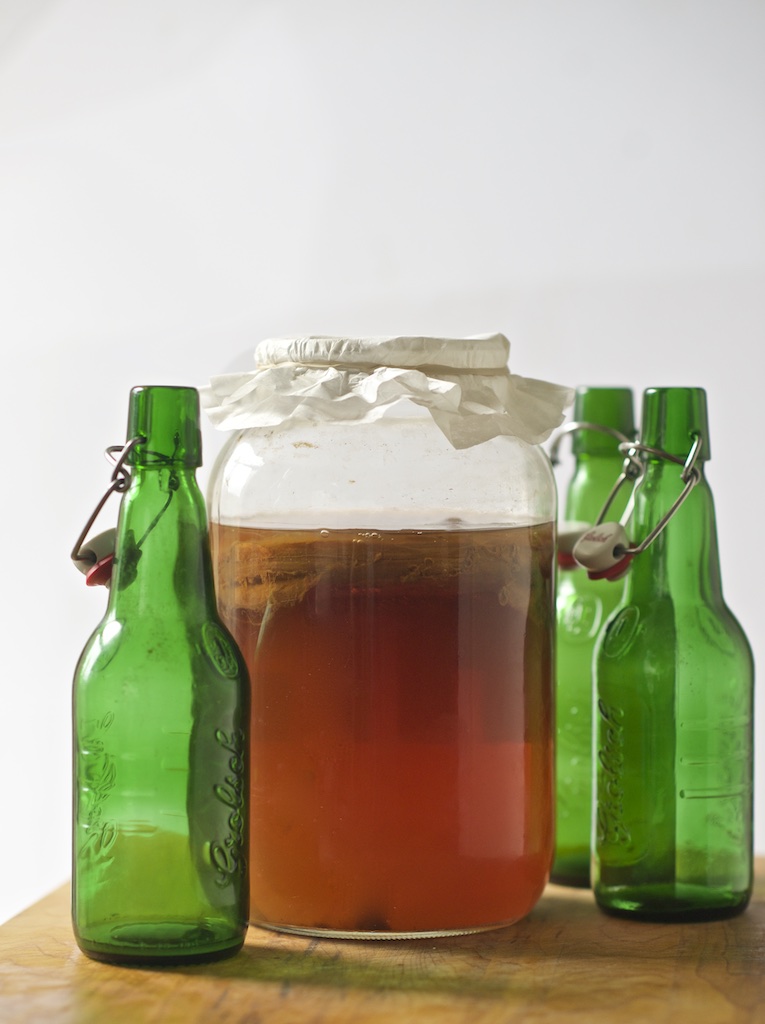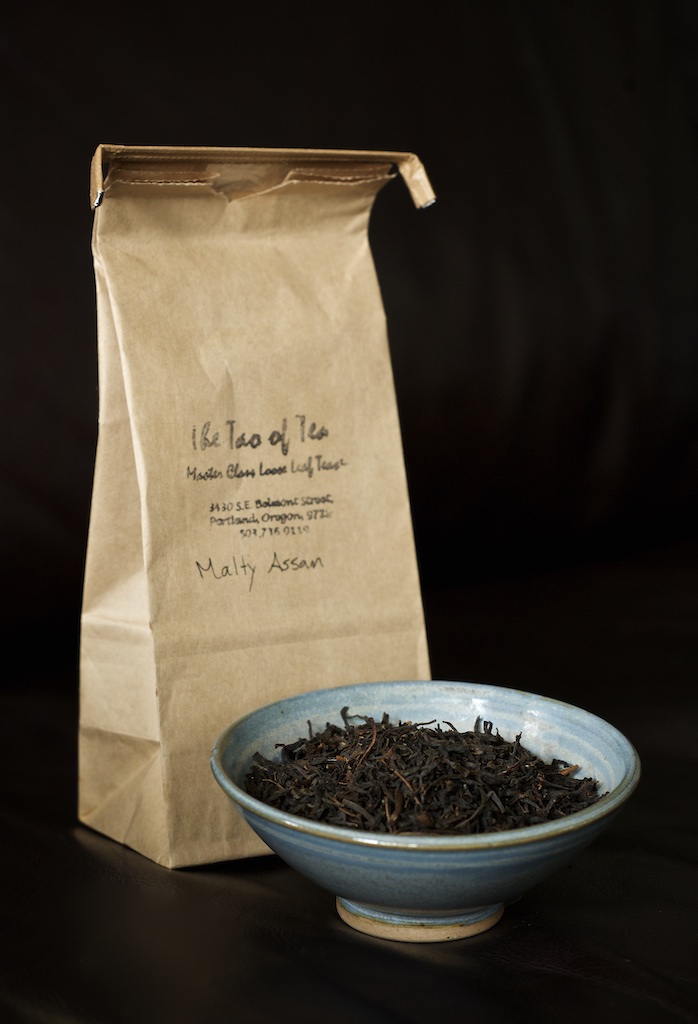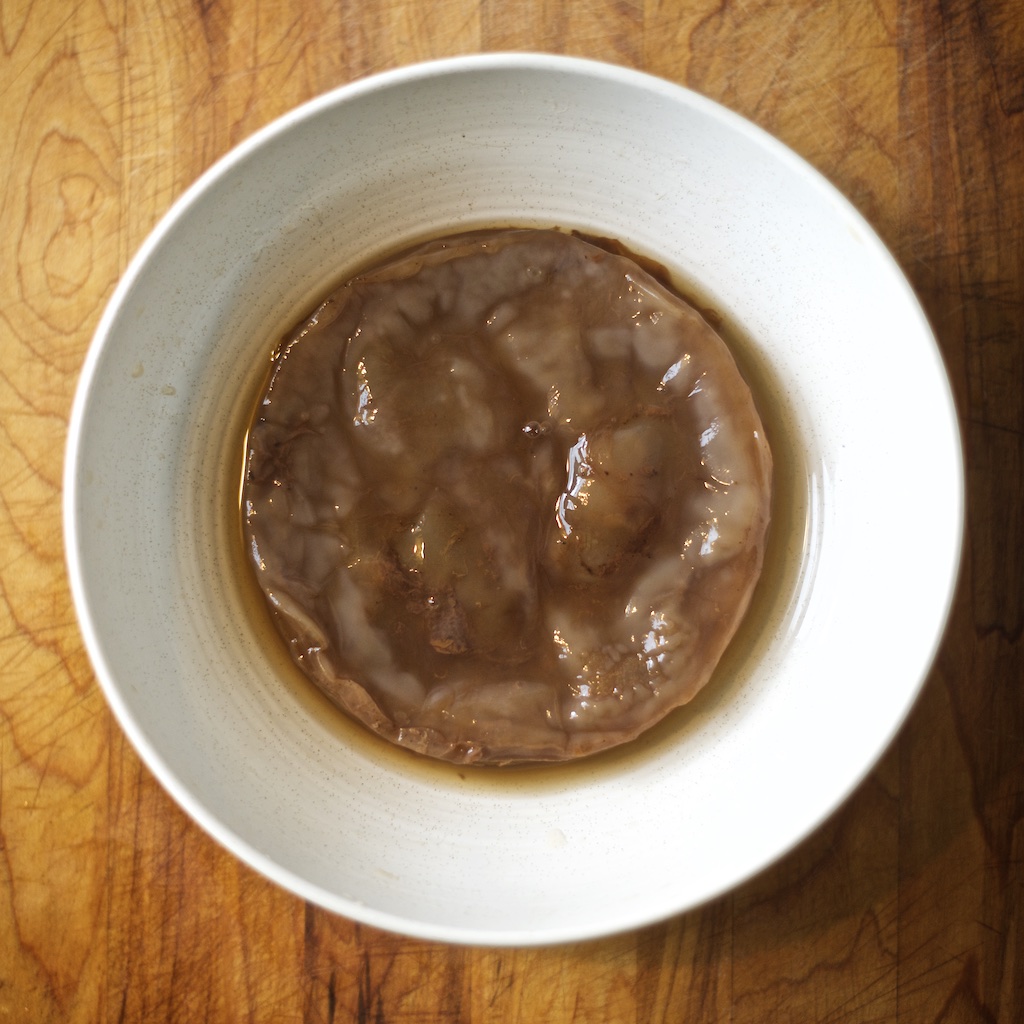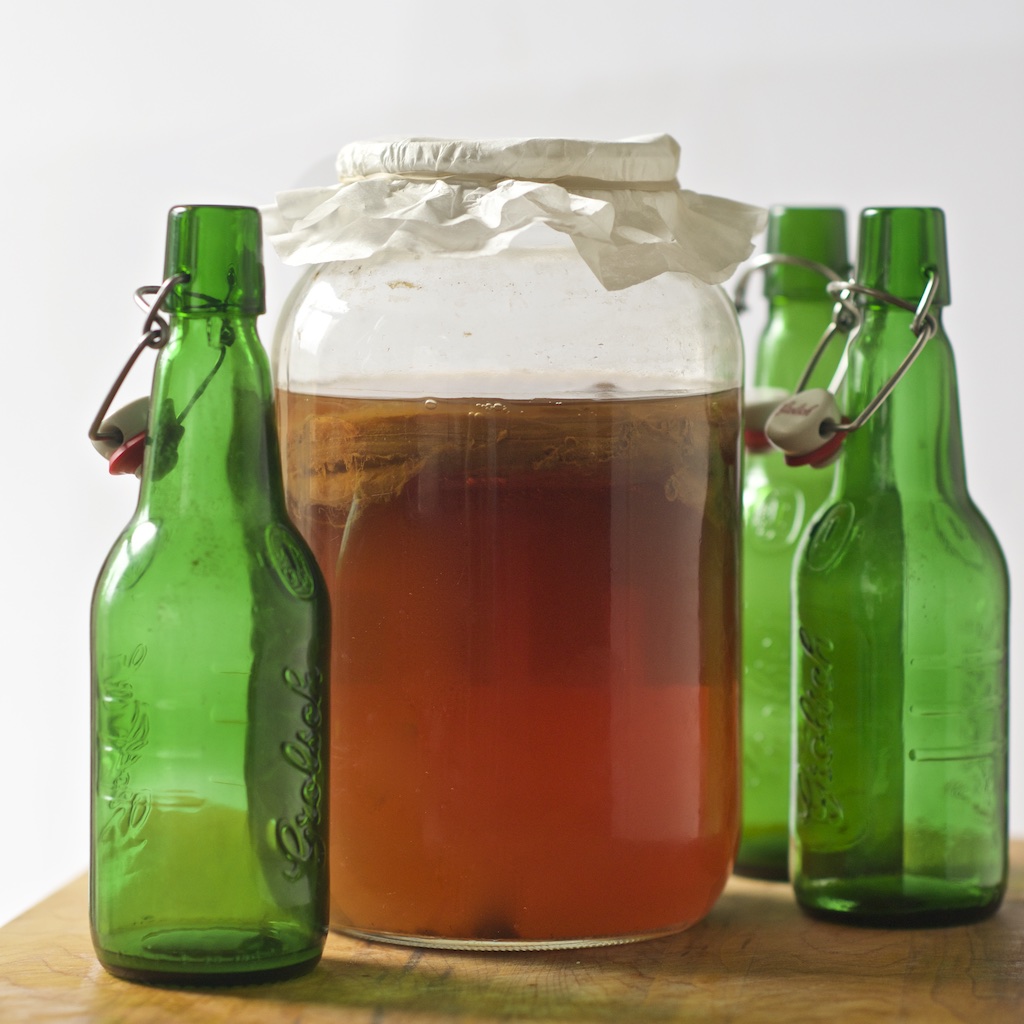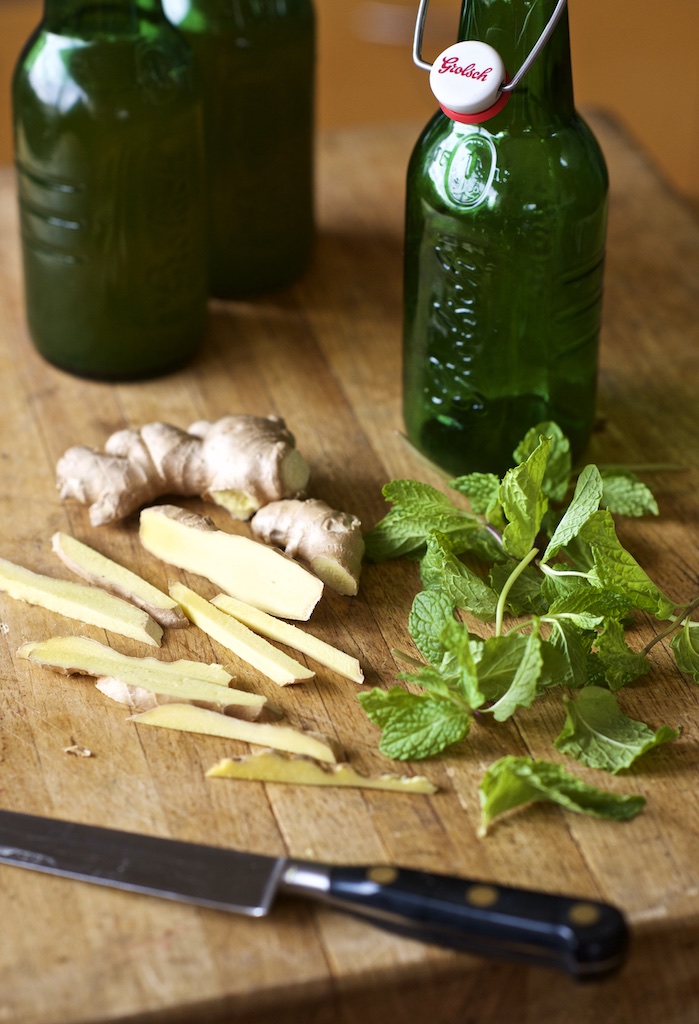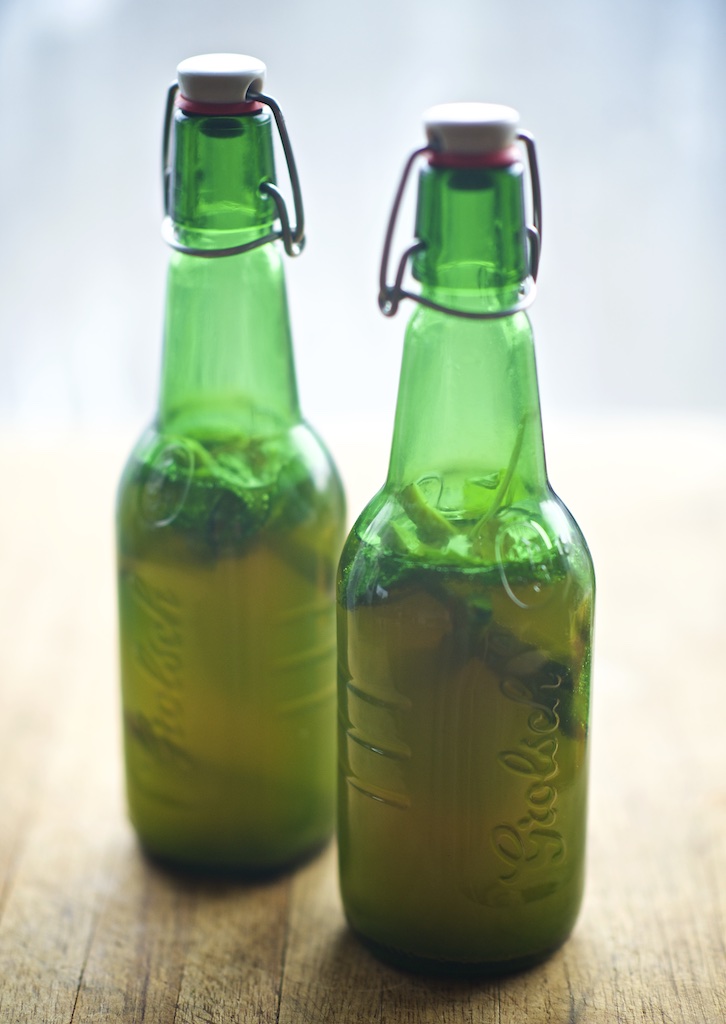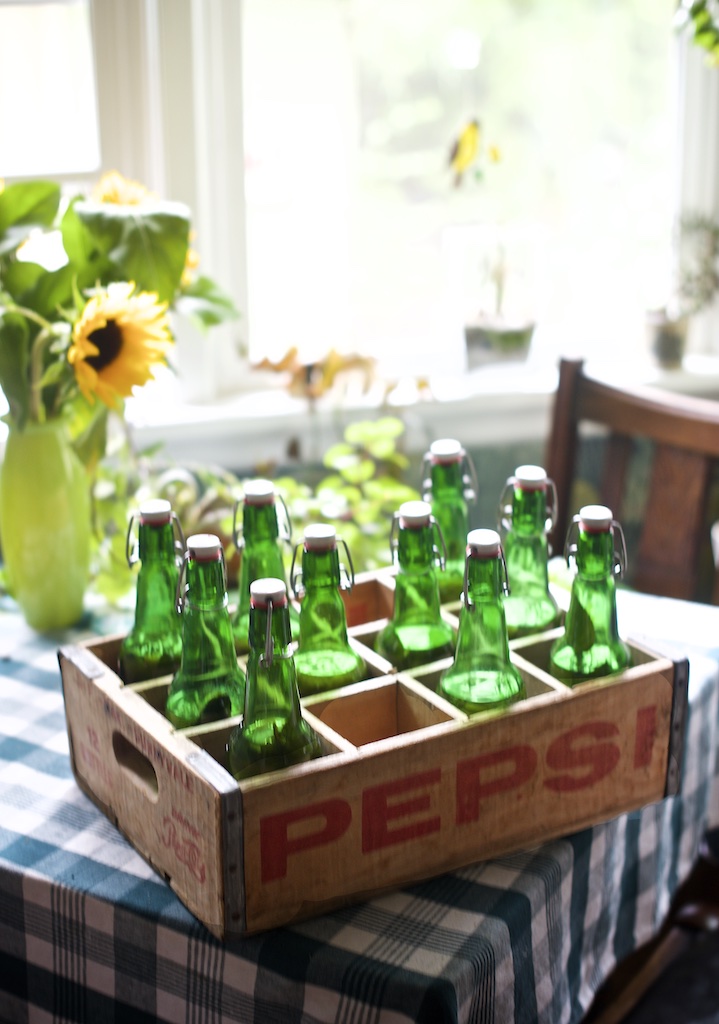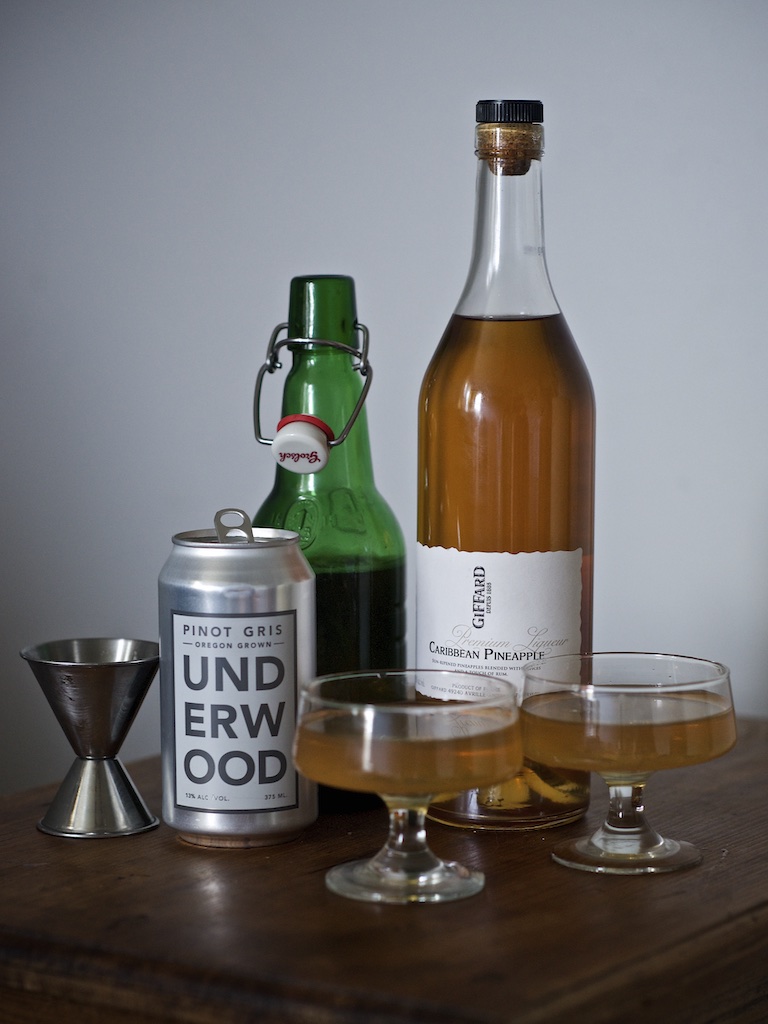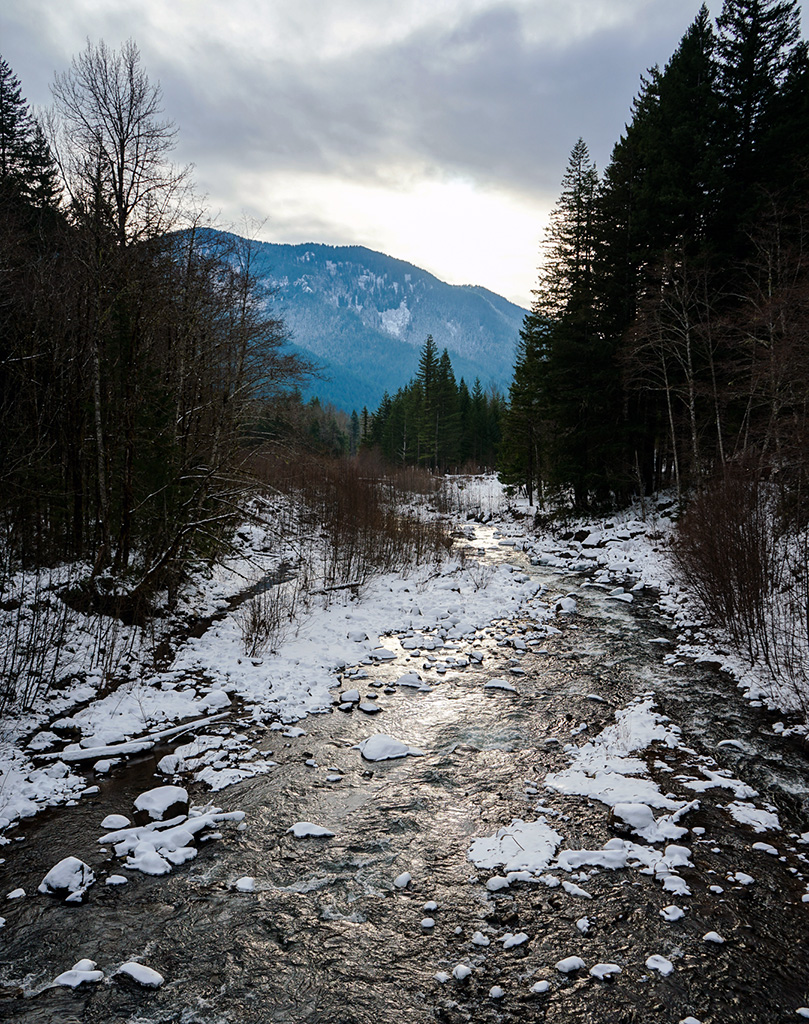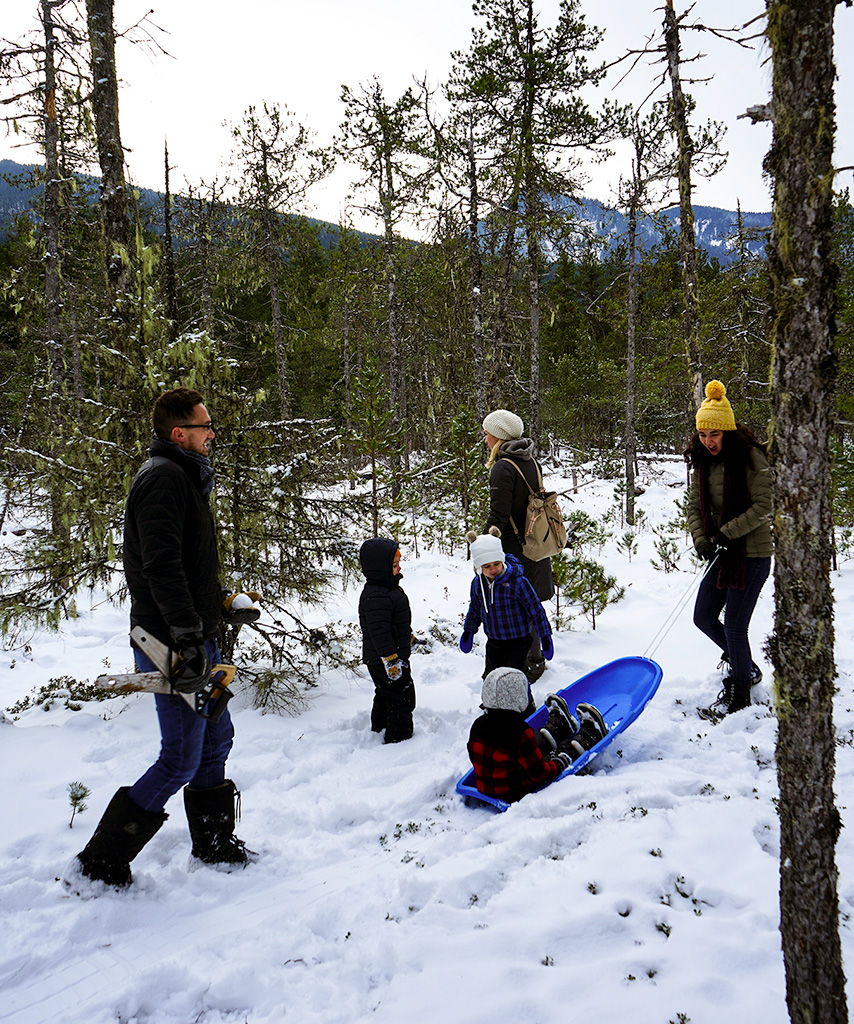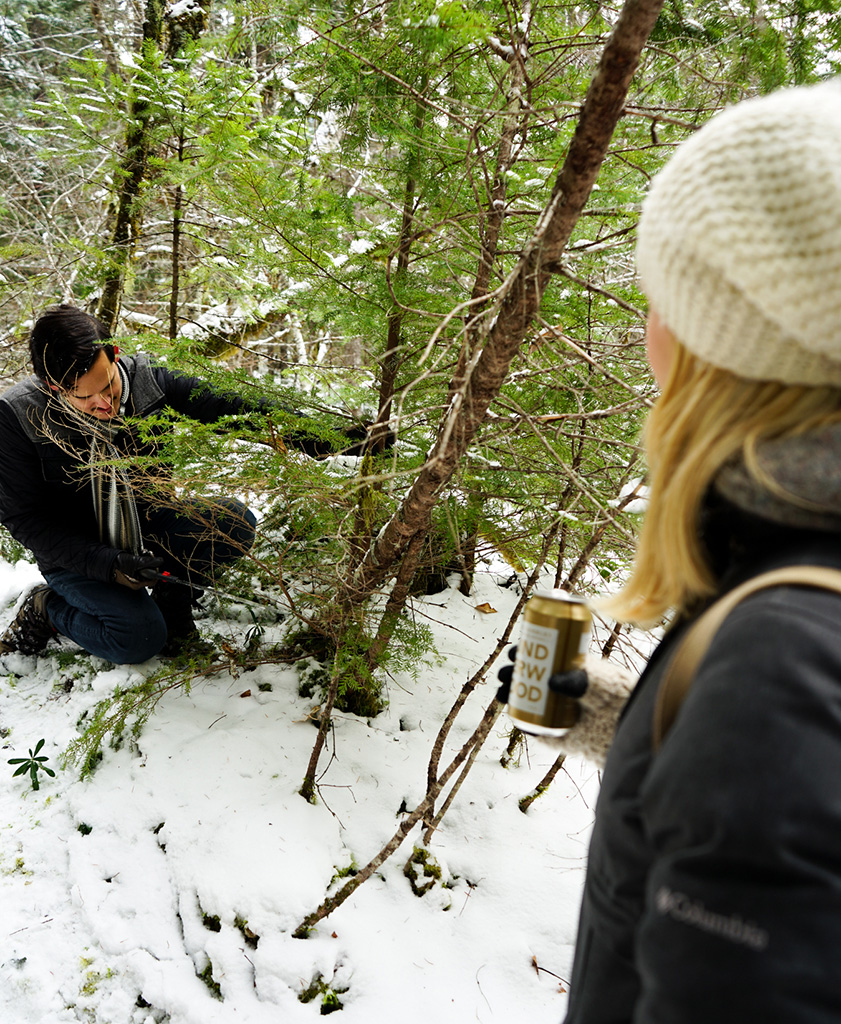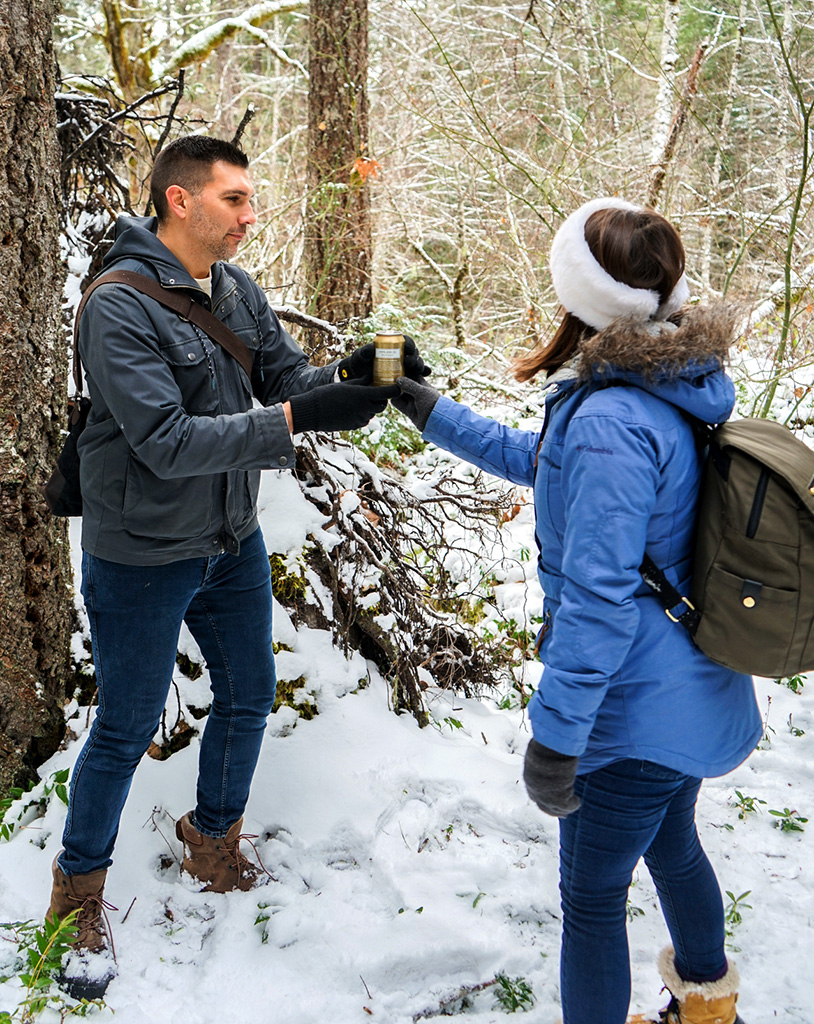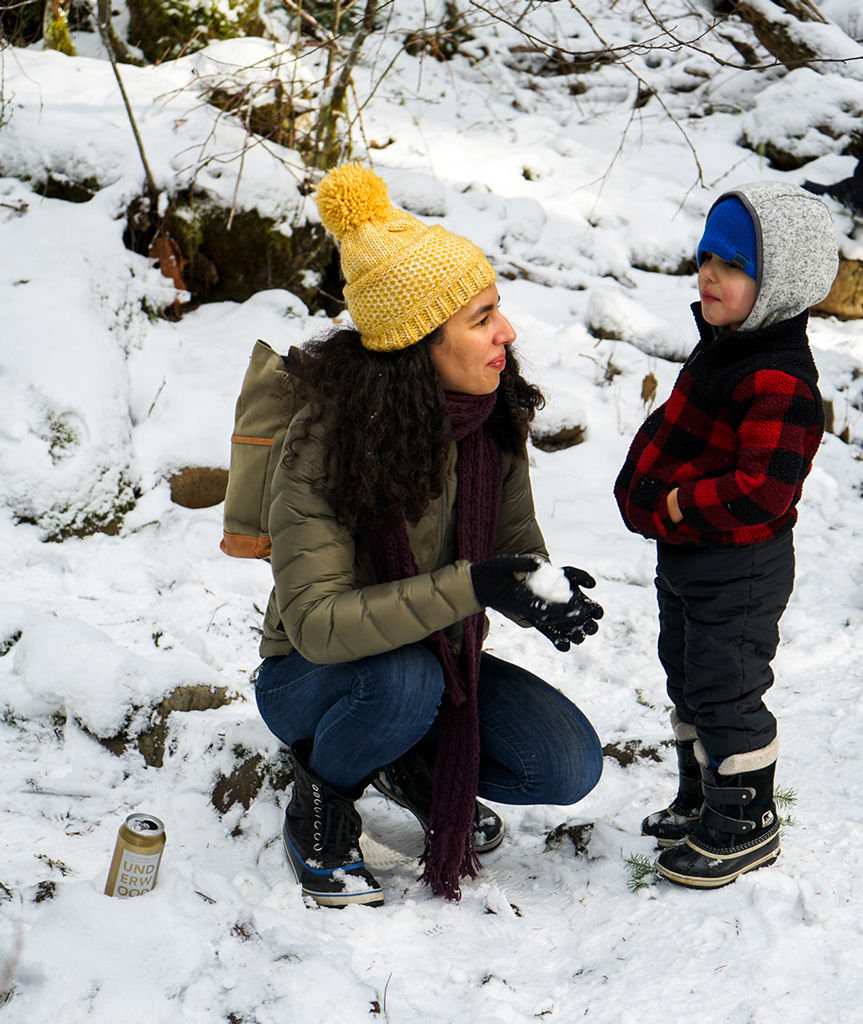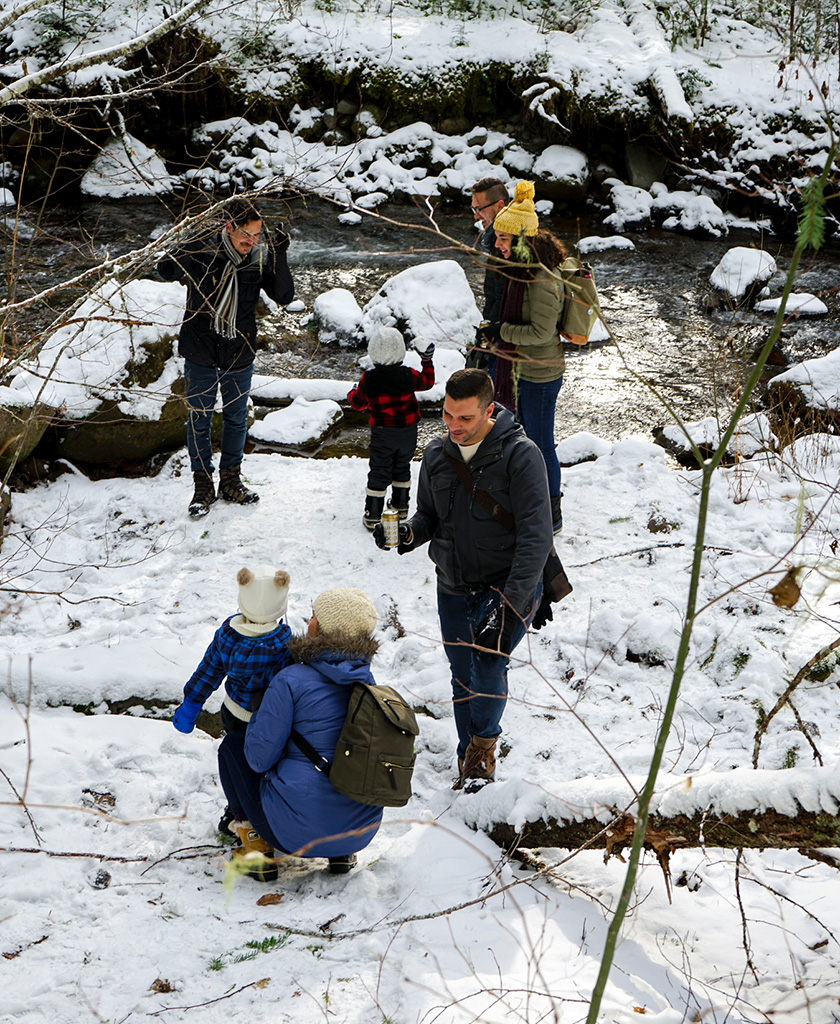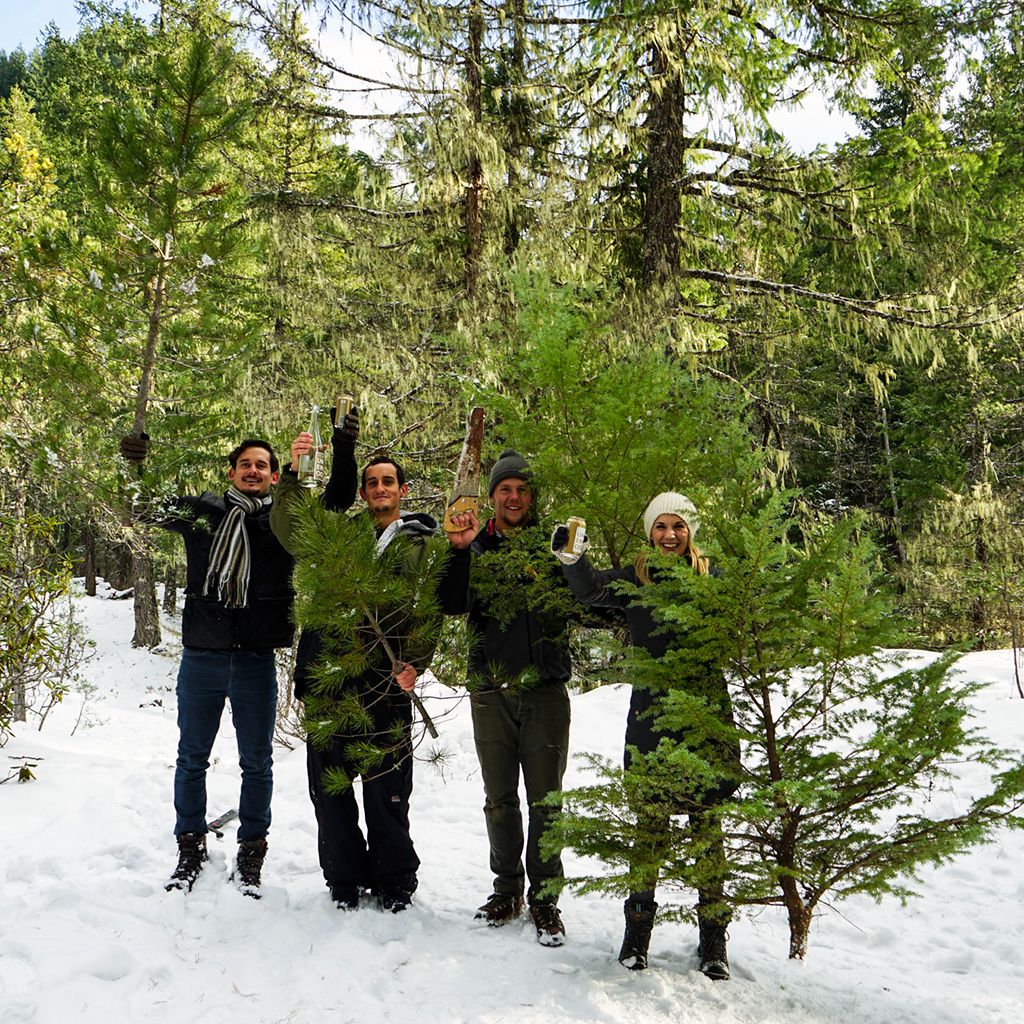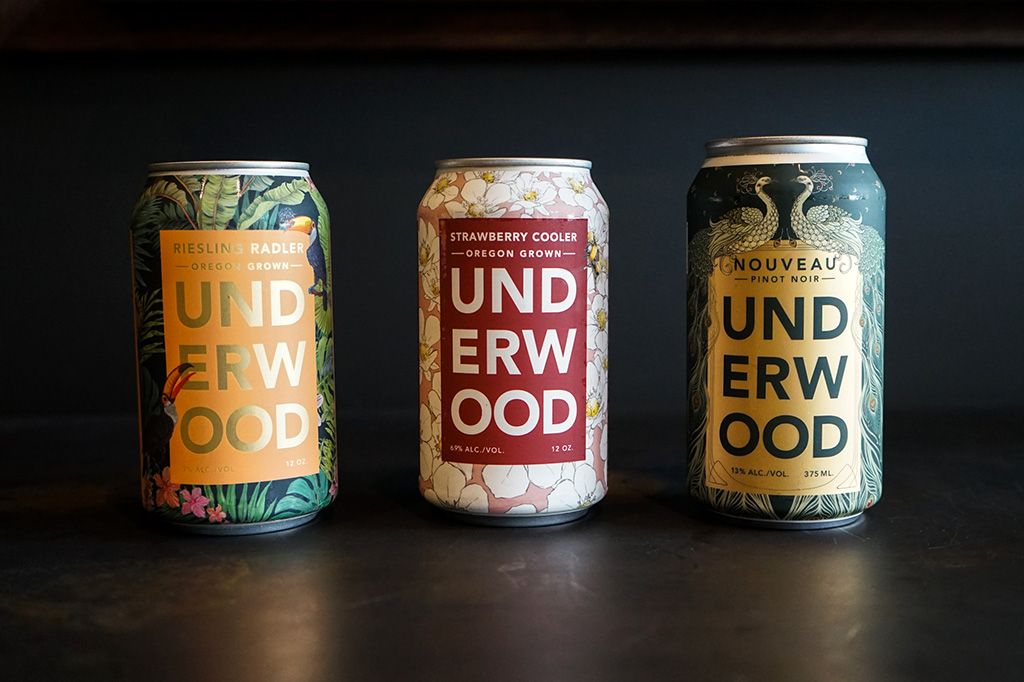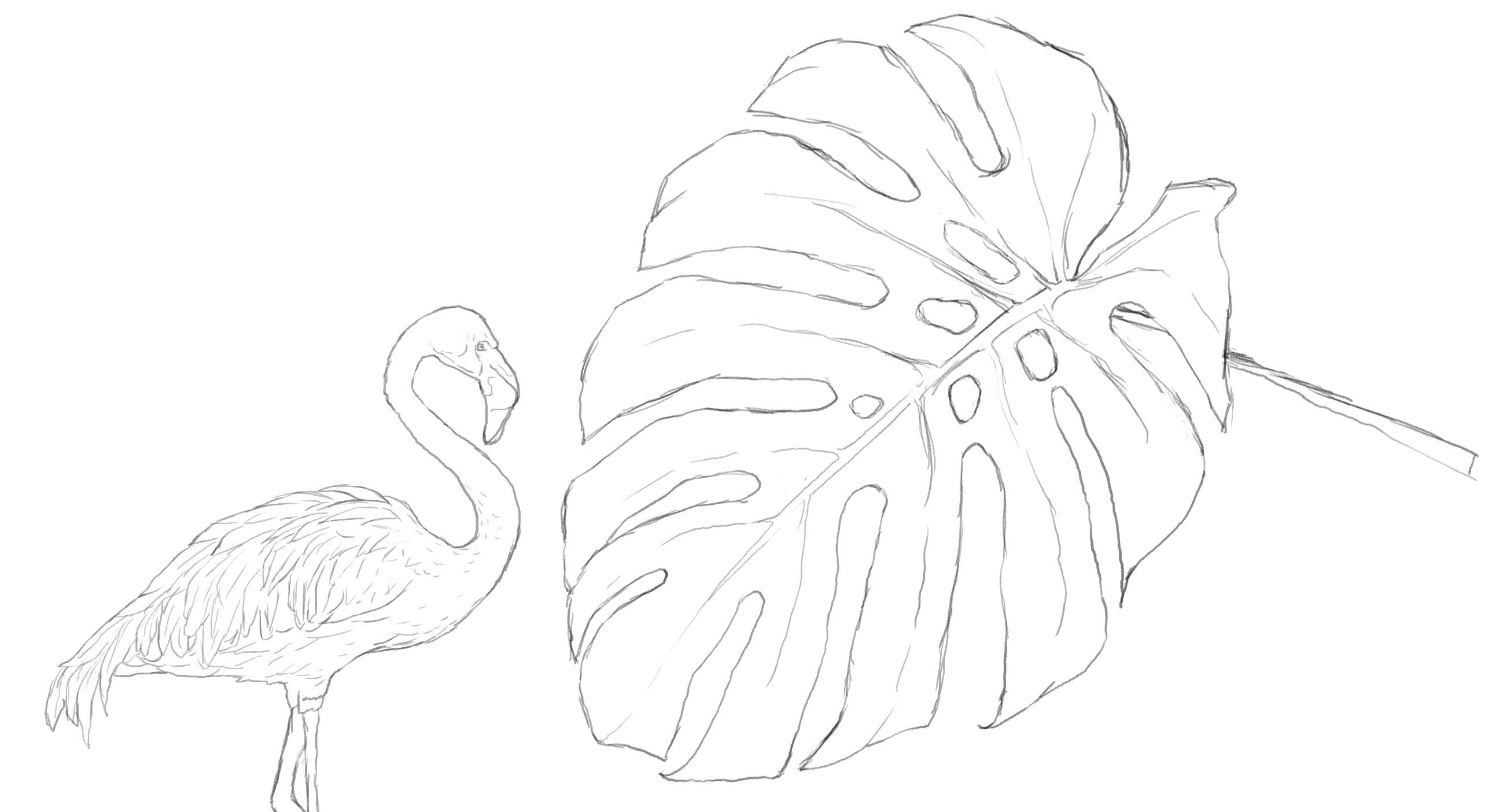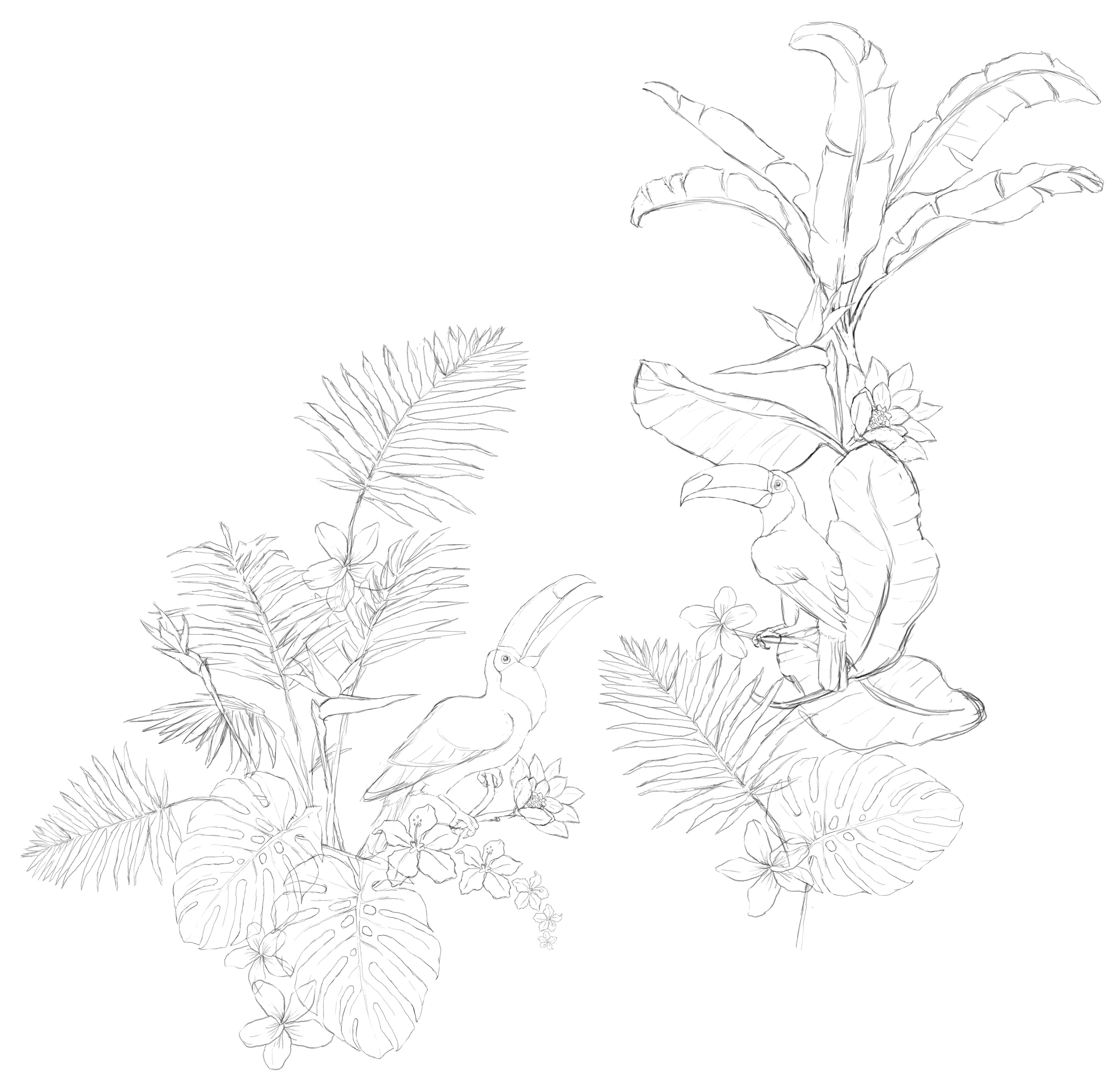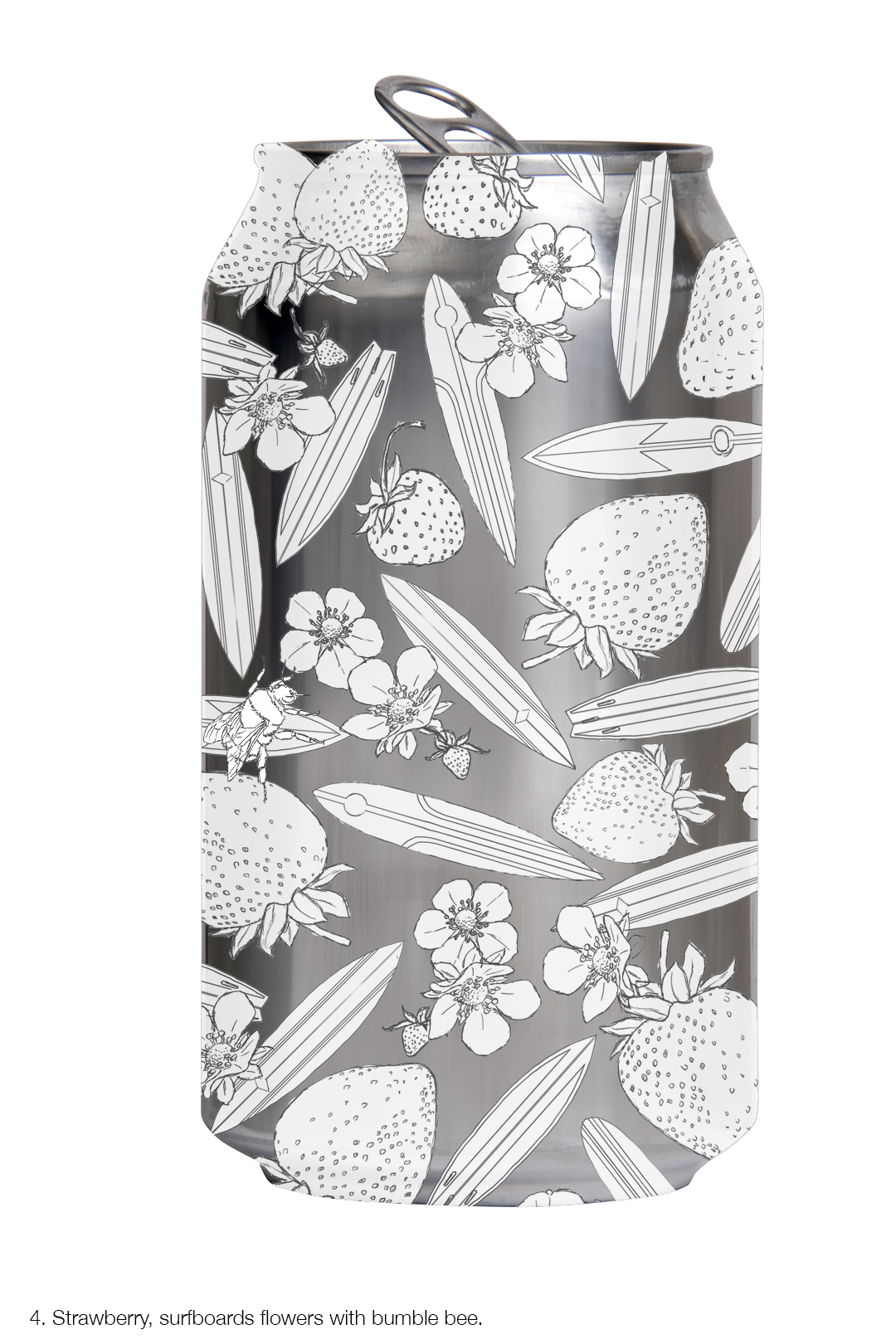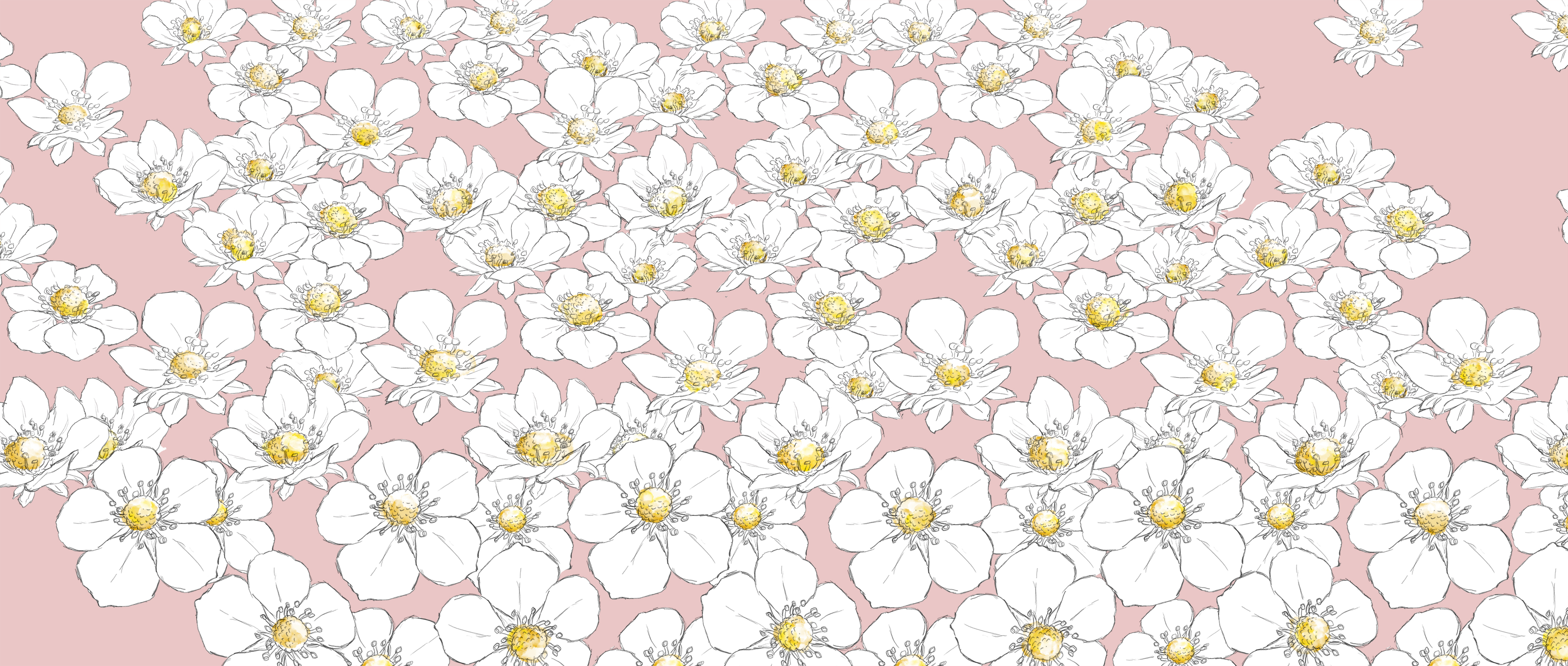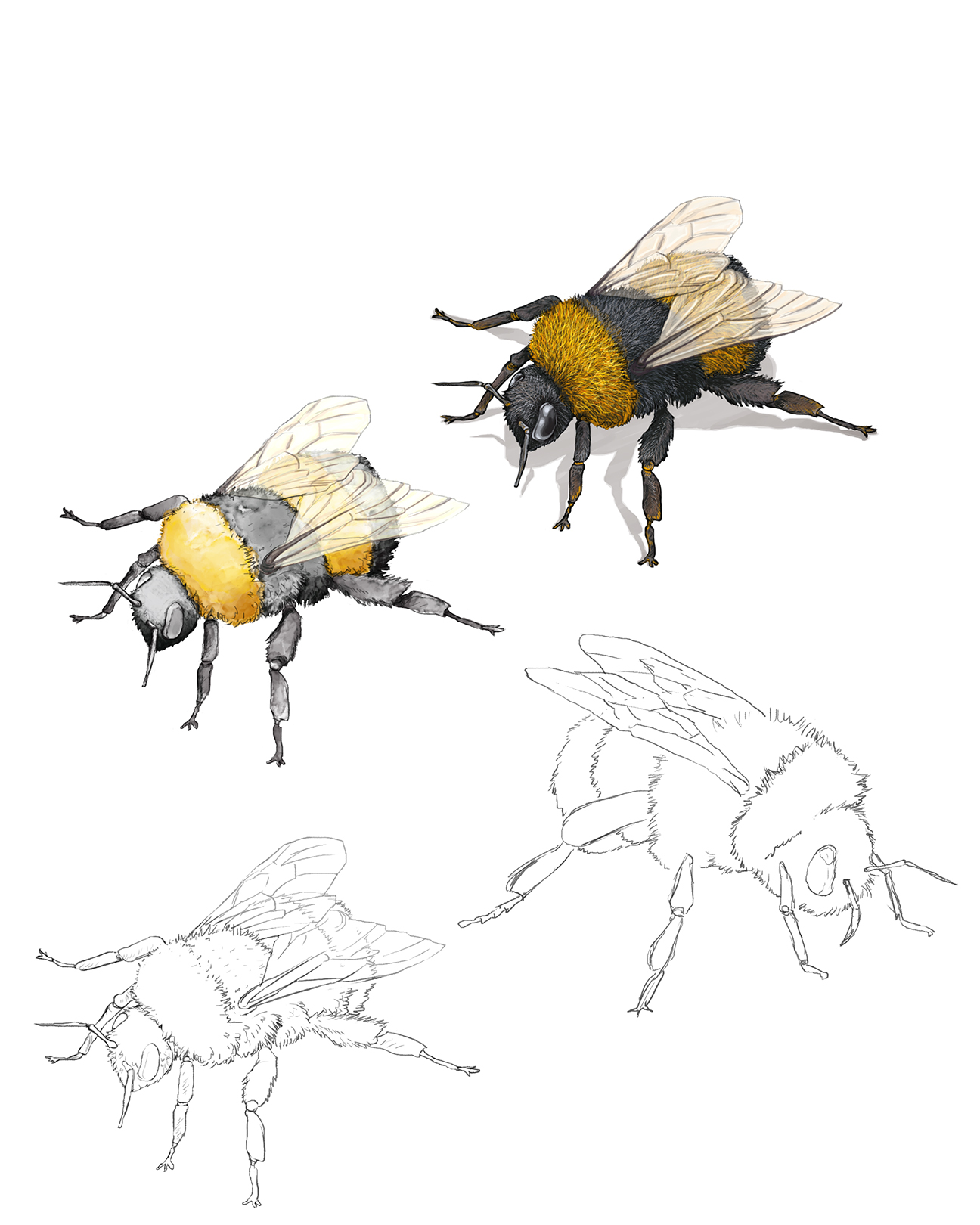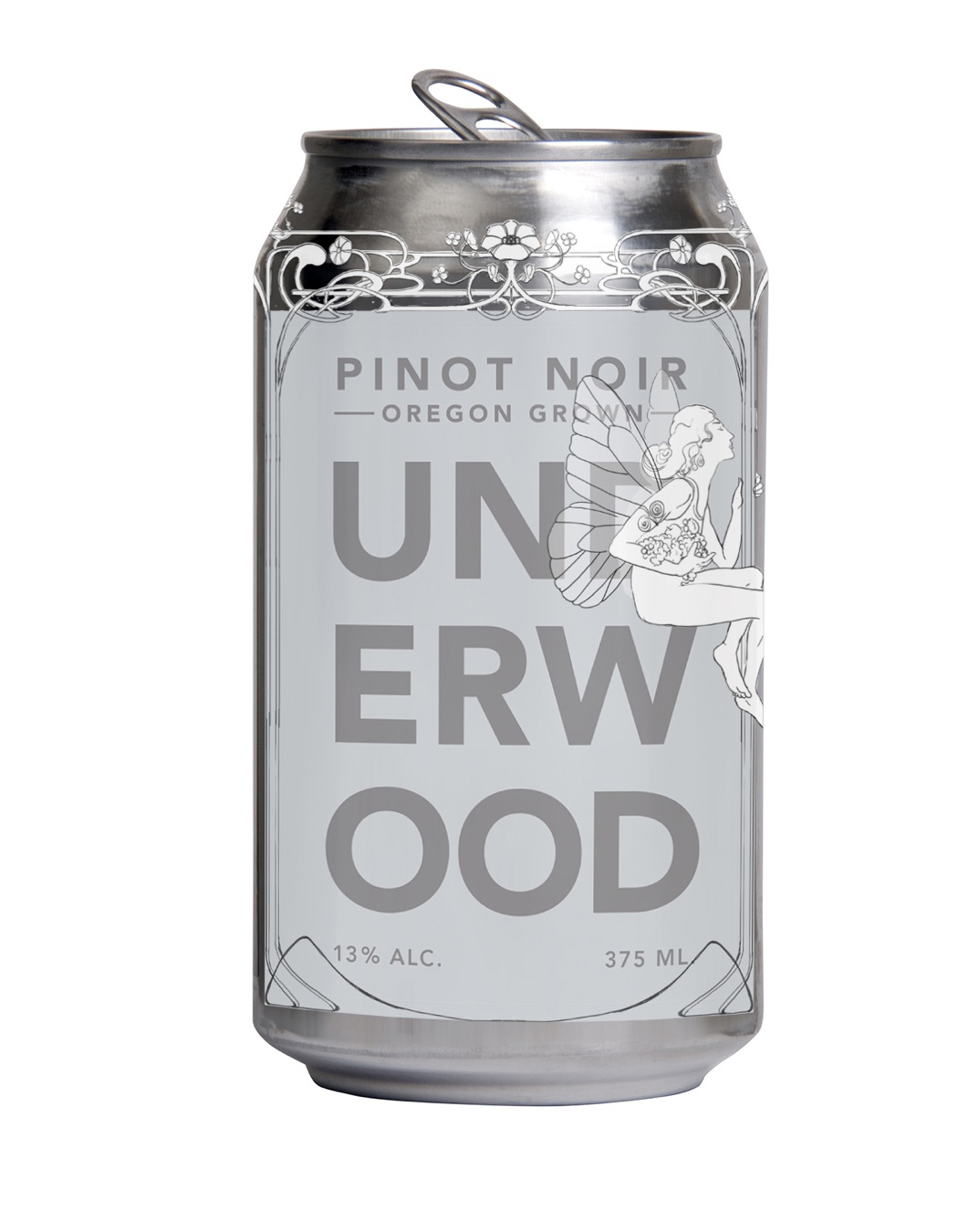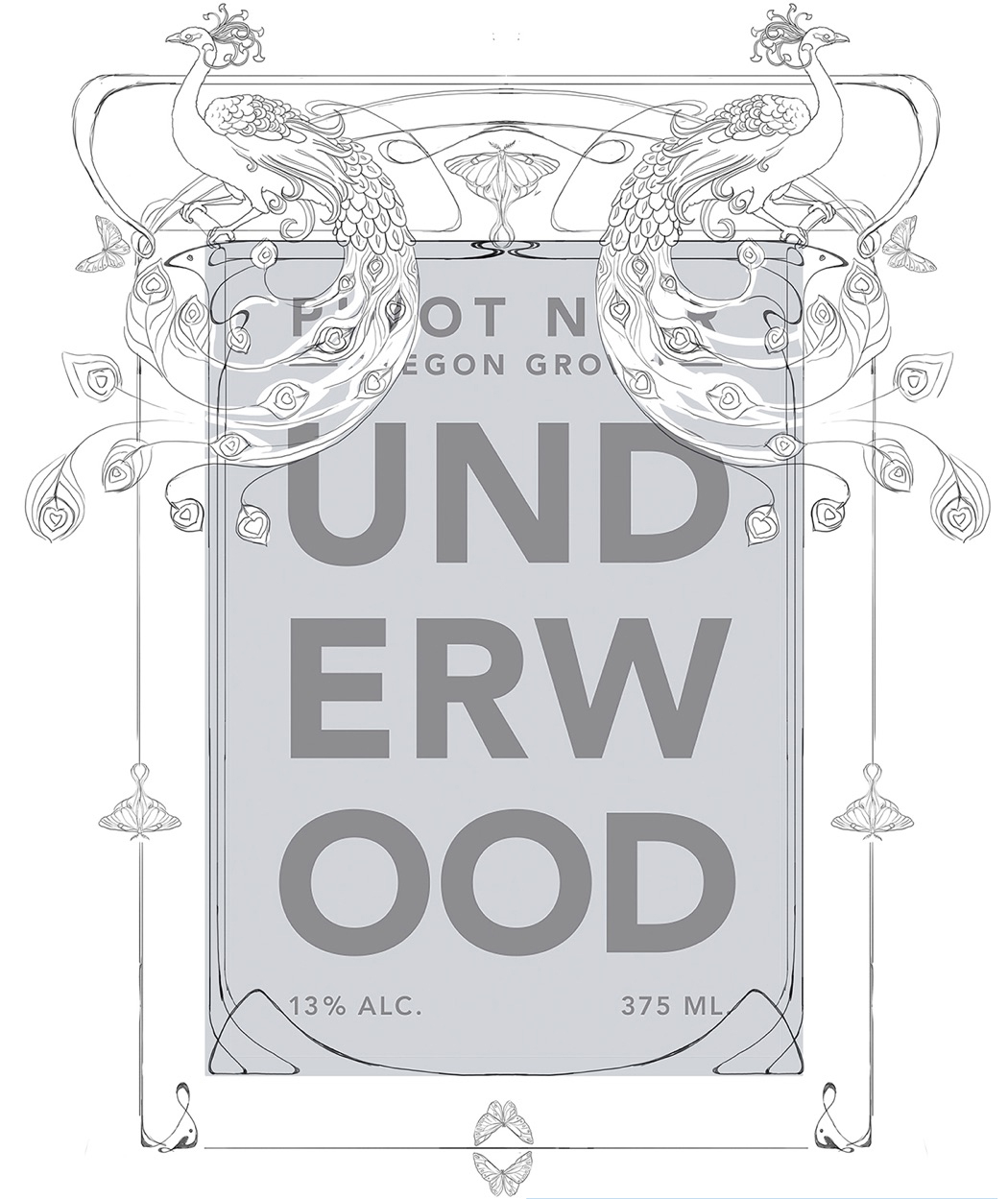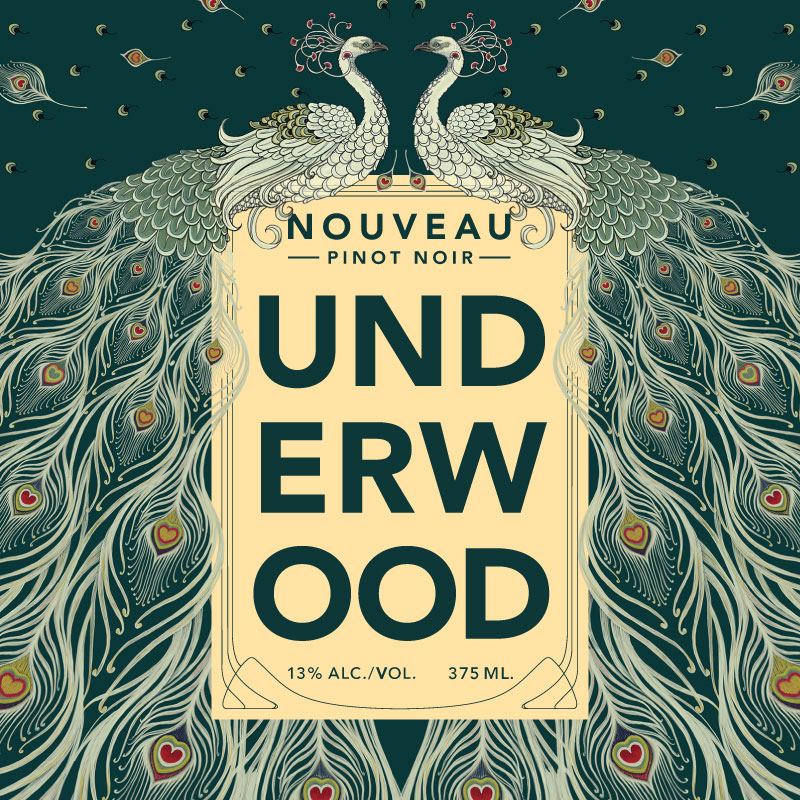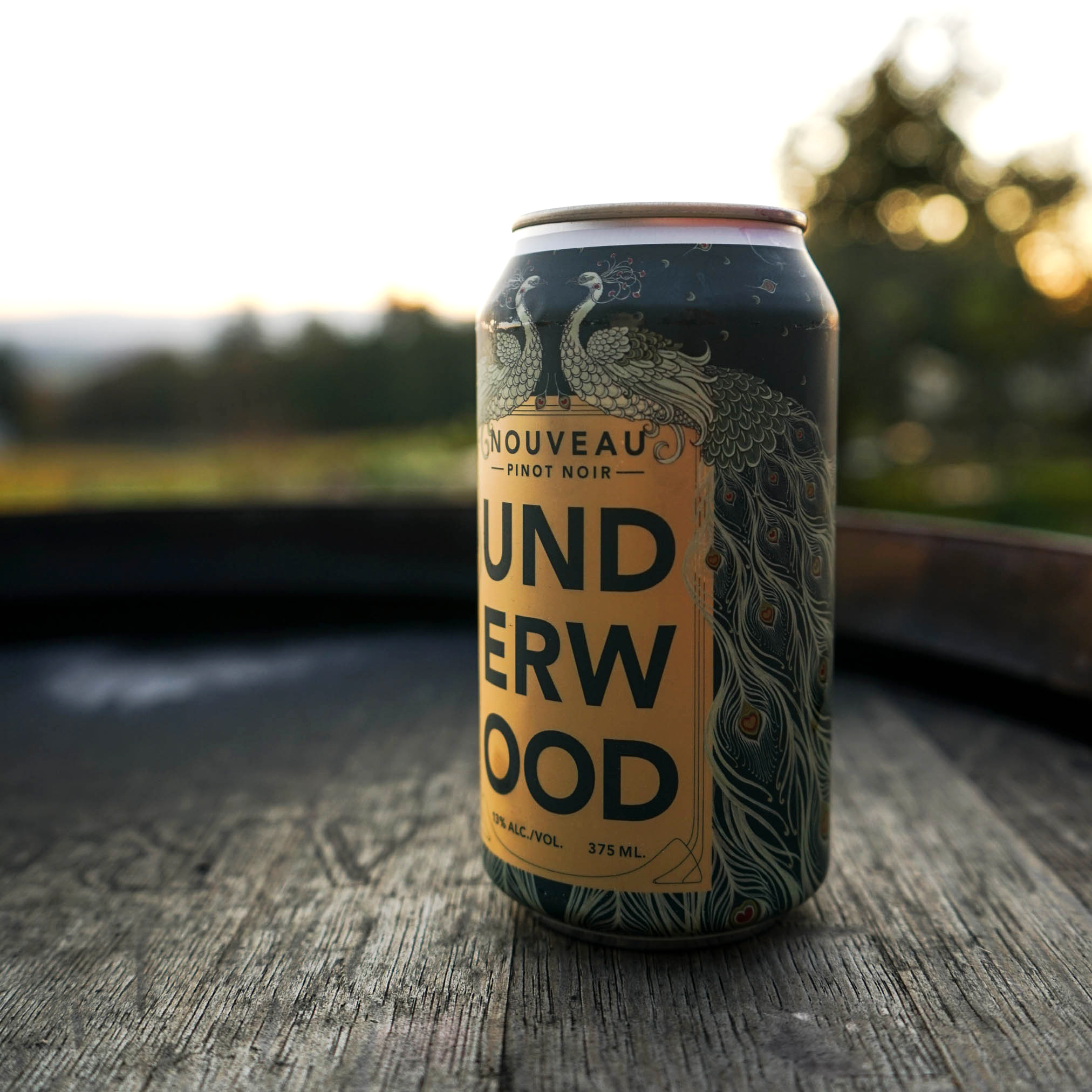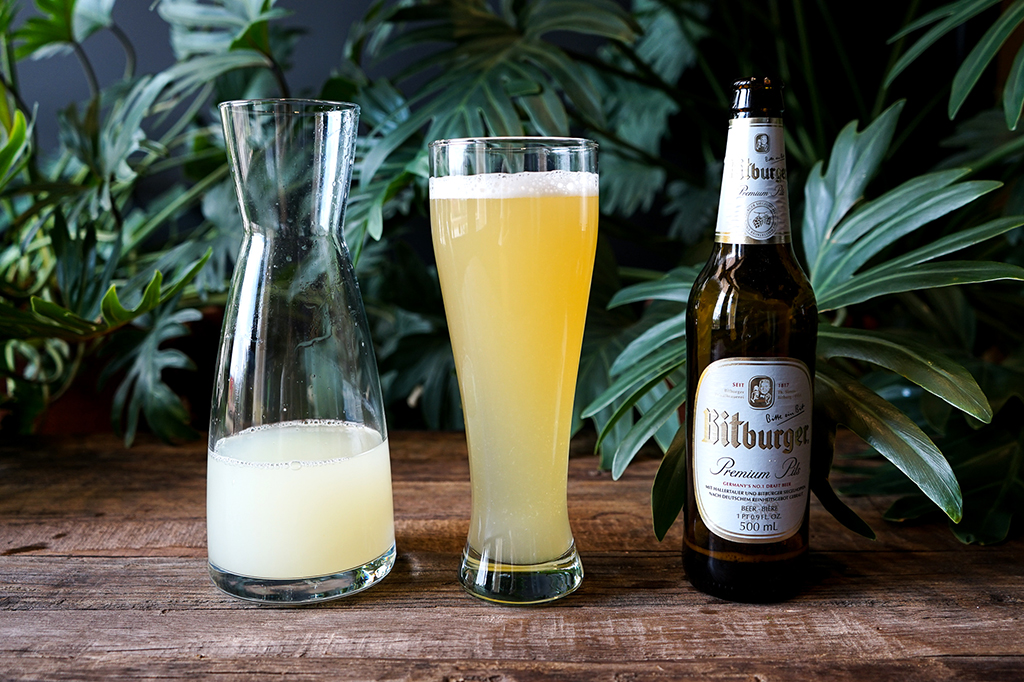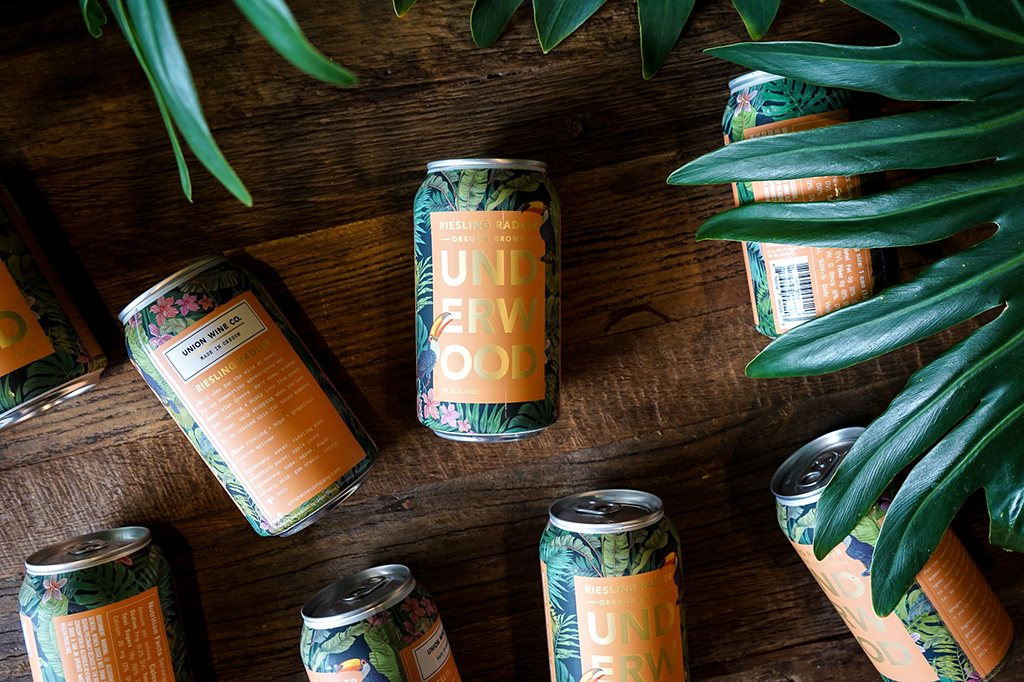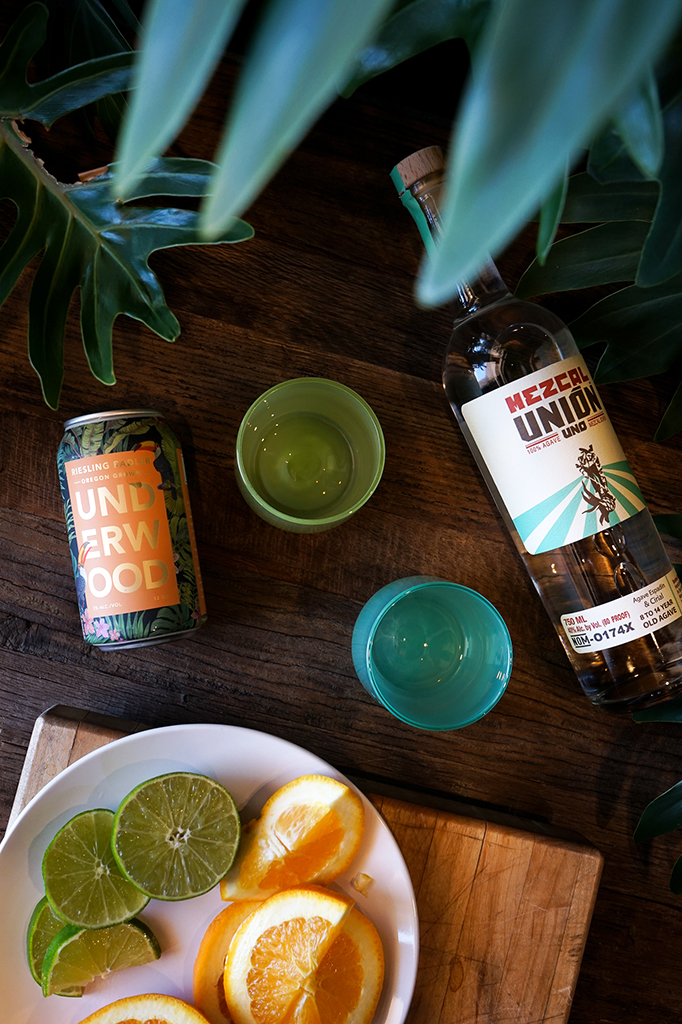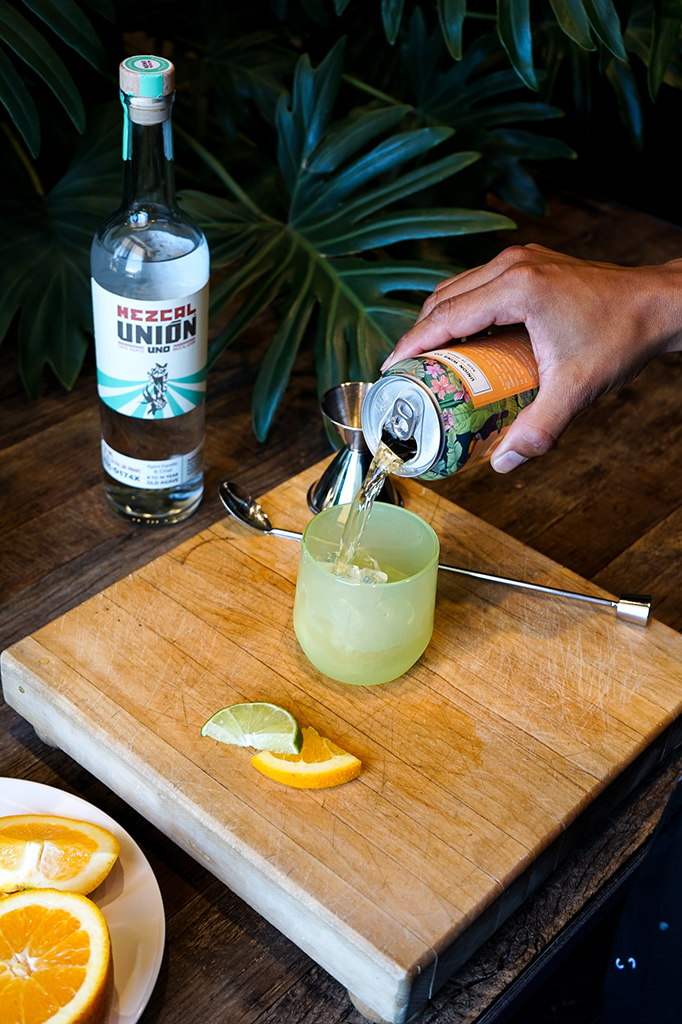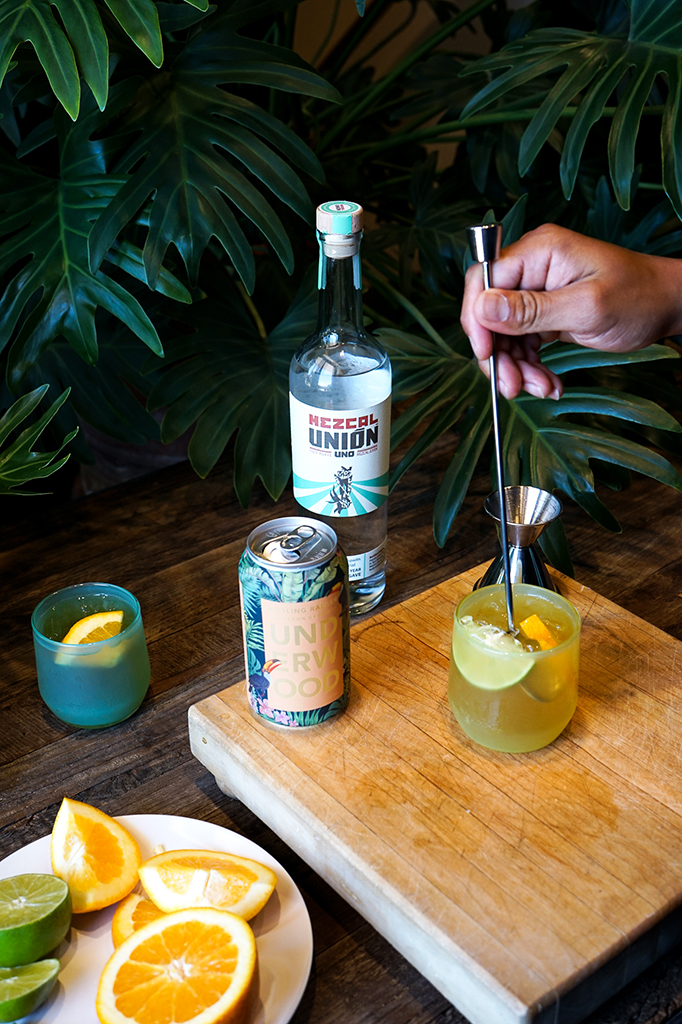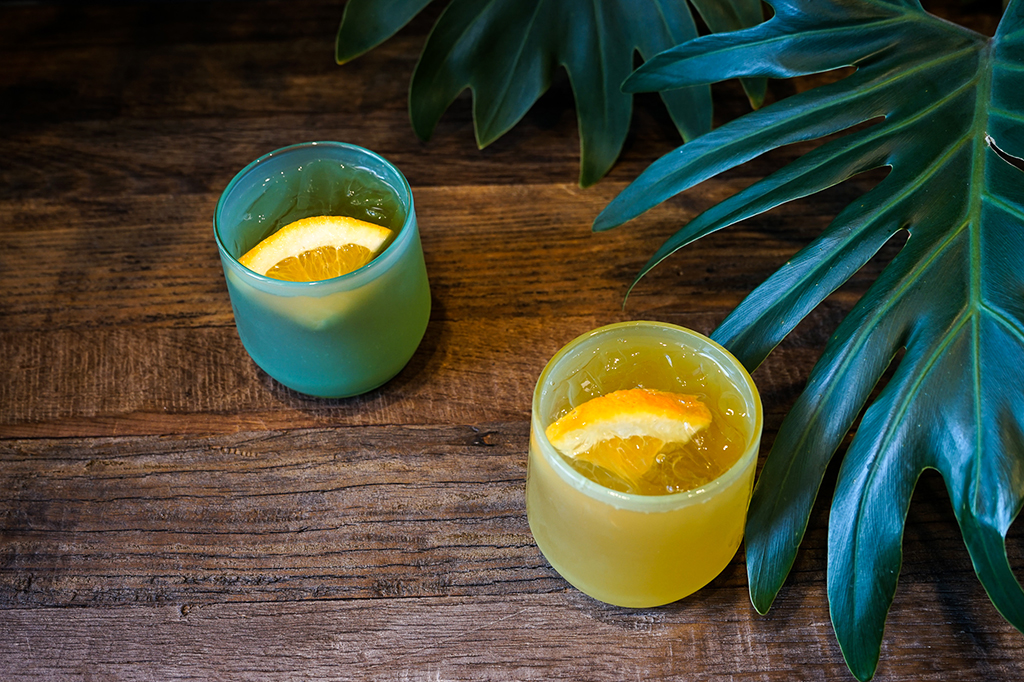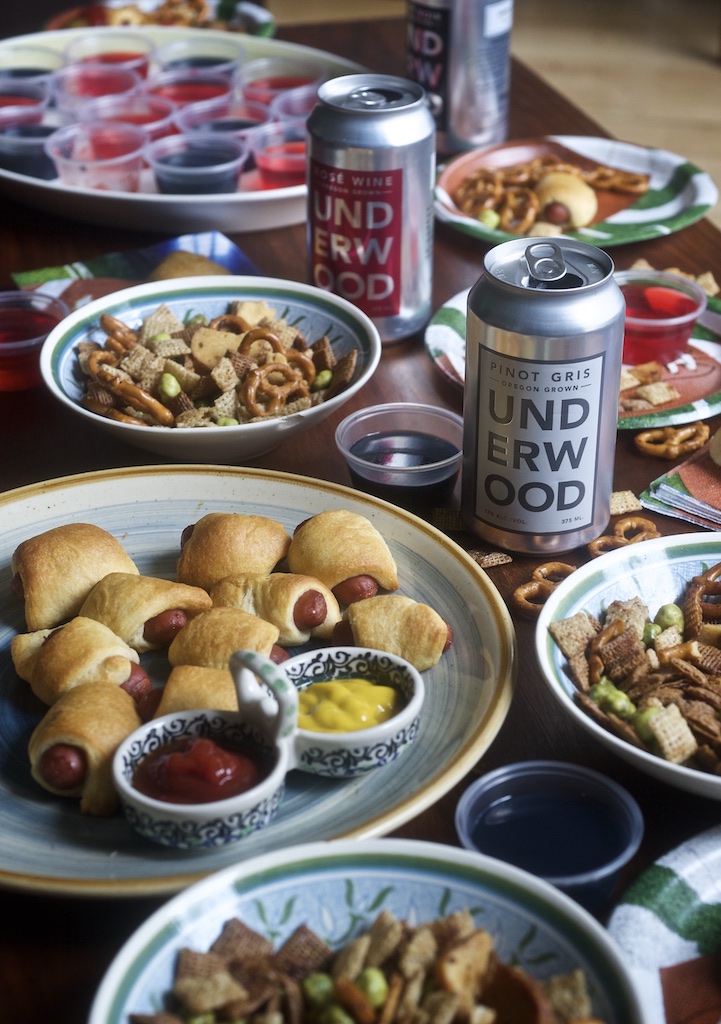
This Sunday, whether you will be rooting for that dreamboat Jimmy G. and his 49ers, or the insanely talented Patrick Mahomes and the Chiefs, I think we can all agree on a few things; One, let’s just hope its a close game. Two, at least we don’t have to watch the Patriots again. And three, whoever is in charge of snacks better not disappoint.
For those Super Bowl party-goers who are more interested in the commercials and the J-Lo halftime performance (you know who you are), the afternoon’s snacks become that much more crucial. So, we figured we’d suggest a few classic treats made in a new way that are bound to impress your guests and make you the hit of the party.
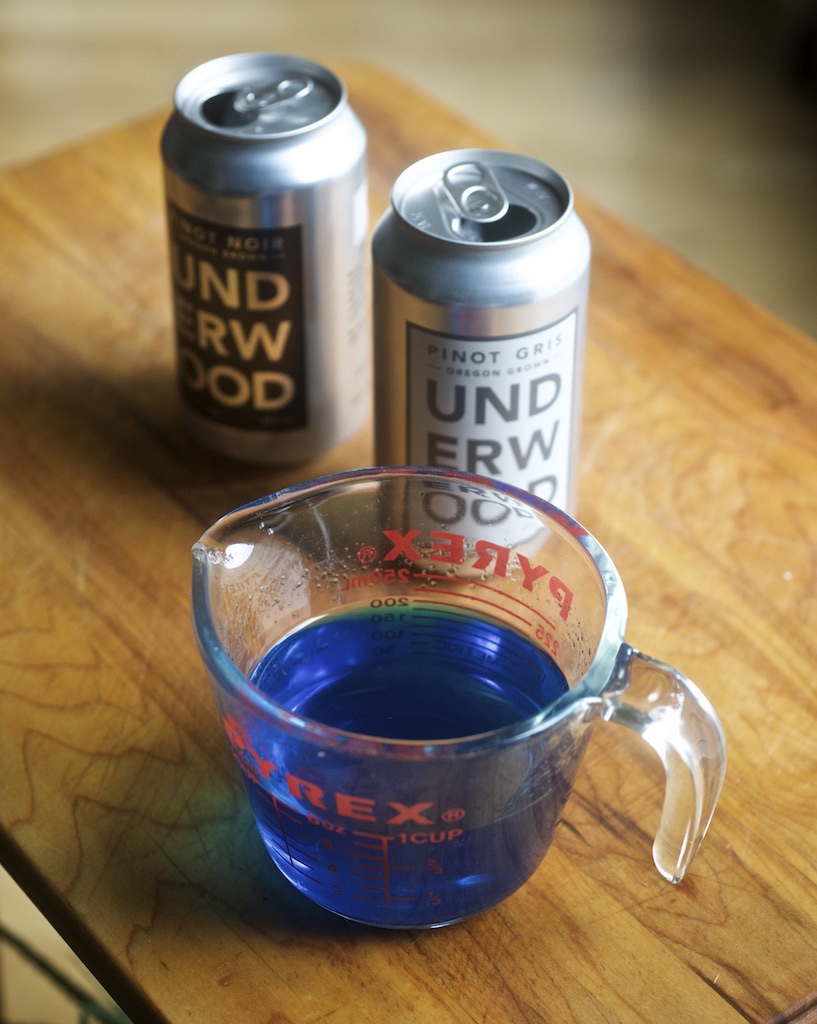
First off, we thought we would show you our take on the classic Jello Shot. There are few constants in this crazy and unpredictable world of ours, but I think it’s safe to say that everyone loves Jello Shots. The original ones, made with vodka or grain alcohol, can really sneak up on you and pack quite the punch. So, we decided to mellow it out a bit and make two flavors using our Underwood Pinot Gris and Pinot Noir. We had planned on matching team colors, but since it’s going to be red all the way around, we went a little off-script. (Thanks a lot, Aaron Rodgers!)
Blue Raspberry Pinot Noir Jello Shots
You don’t need to be a culinary wizard to pull off Jello, that’s a big part of the allure. Simply combine one package of Blue Raspberry Jello with 1 Cup of boiling water. Whisk to combine. Let cool slightly and add 1 C Pinot Noir. Separate into small cups. Makes about 15.
Strawberry Pinot Gris Jello Shots
Repeat the same steps as above, just use the Strawberry Jello and 1 Cup of boiling water with 1 Cup of Pinot Gris. Both of these turned out delicious and hopefully won’t be quite as strong as the ones you may have had back in your college days. (We all have to get up early on Monday for work.)
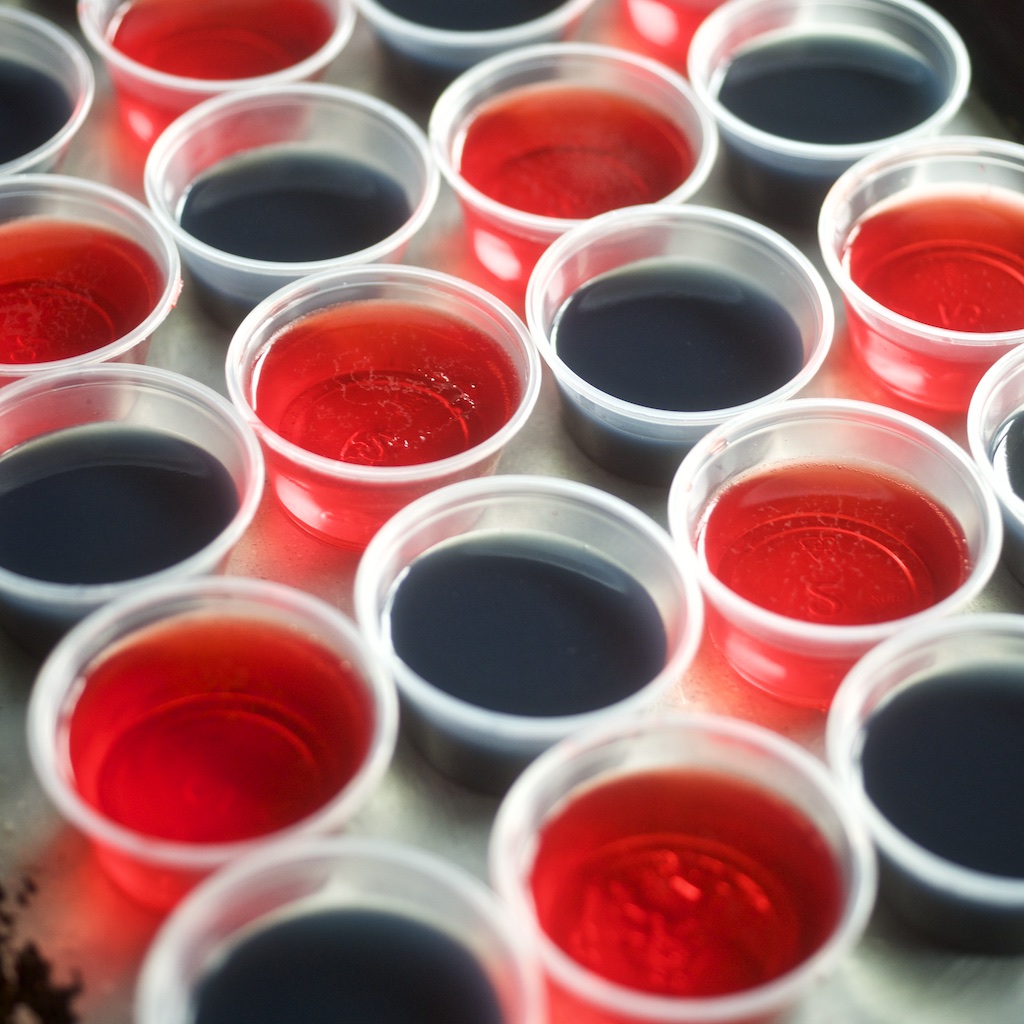
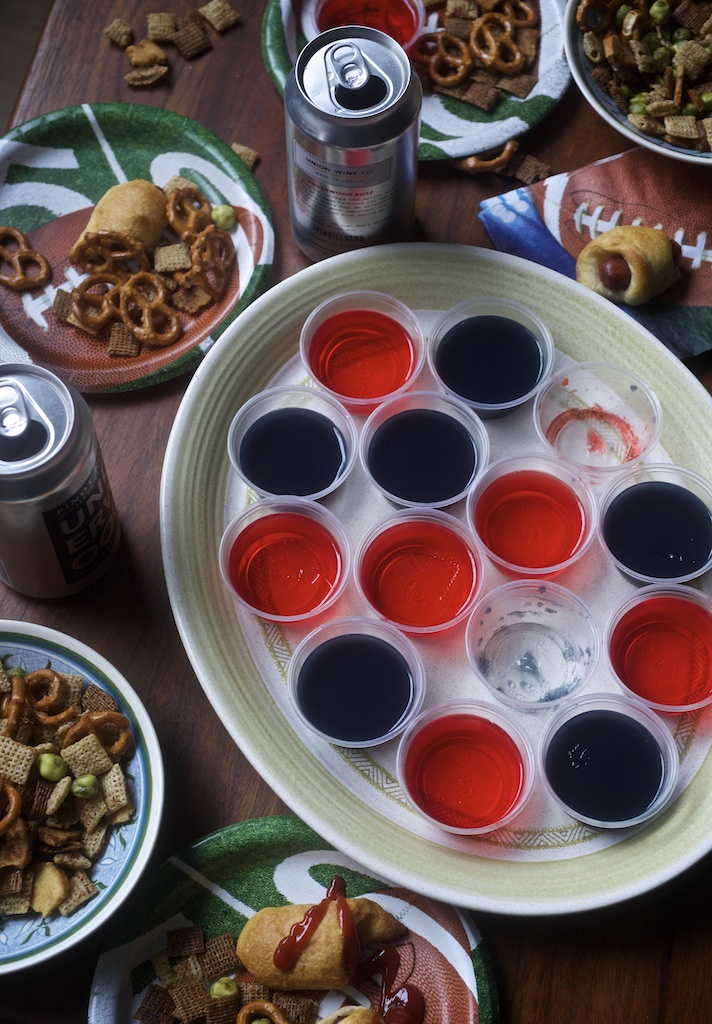
Another game day favorite is Chex Mix. There are lots of different variations on the classic baked mix and we encourage you to add any ingredients that strike your fancy. We recently discovered the Jacobsen Ramen Seasoning and thought we would try something a bit cross-cultural. The wasabi peas really add an amazing and unexpected kick.
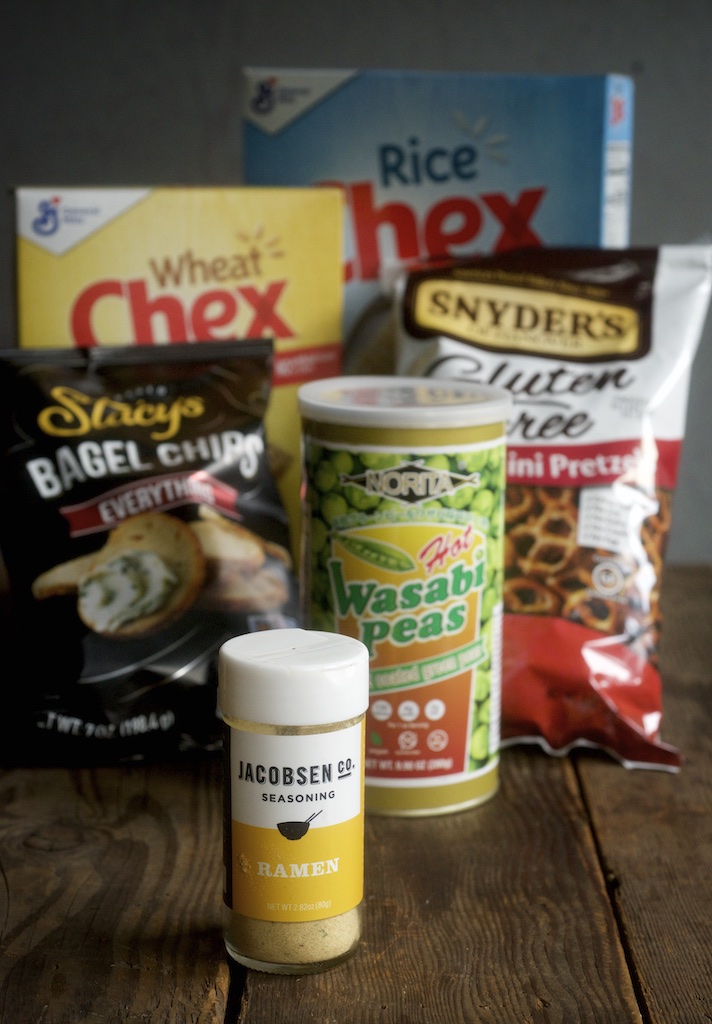
Japanese Ramen Chex Mix
2 C Rice Chex
2 C Wheat Chex
1 1/2 C baby pretzels
1 1/12 C bagel chips (broken into smaller pieces)
1 C Wasabi Peas
1 1/2 sticks unsalted butter
1 (heaping) T Jacobsen’s Ramen Seasoning
1 T Worcestershire Sauce
1 t onion powder
1 t garlic powder
Preheat the oven to 250 degrees. Spread the first 4 ingredients equally among two half-sheet pans. (Don’t add the wasabi peas until after cooking is complete.)
On the stovetop, melt butter and whisk in remaining ingredients. Evenly coat all dried ingredients and cook for one hour, removing the pans every 15 minutes to stir for even cooking. Once cooled, stir in the peas and store in glass Mason jars.
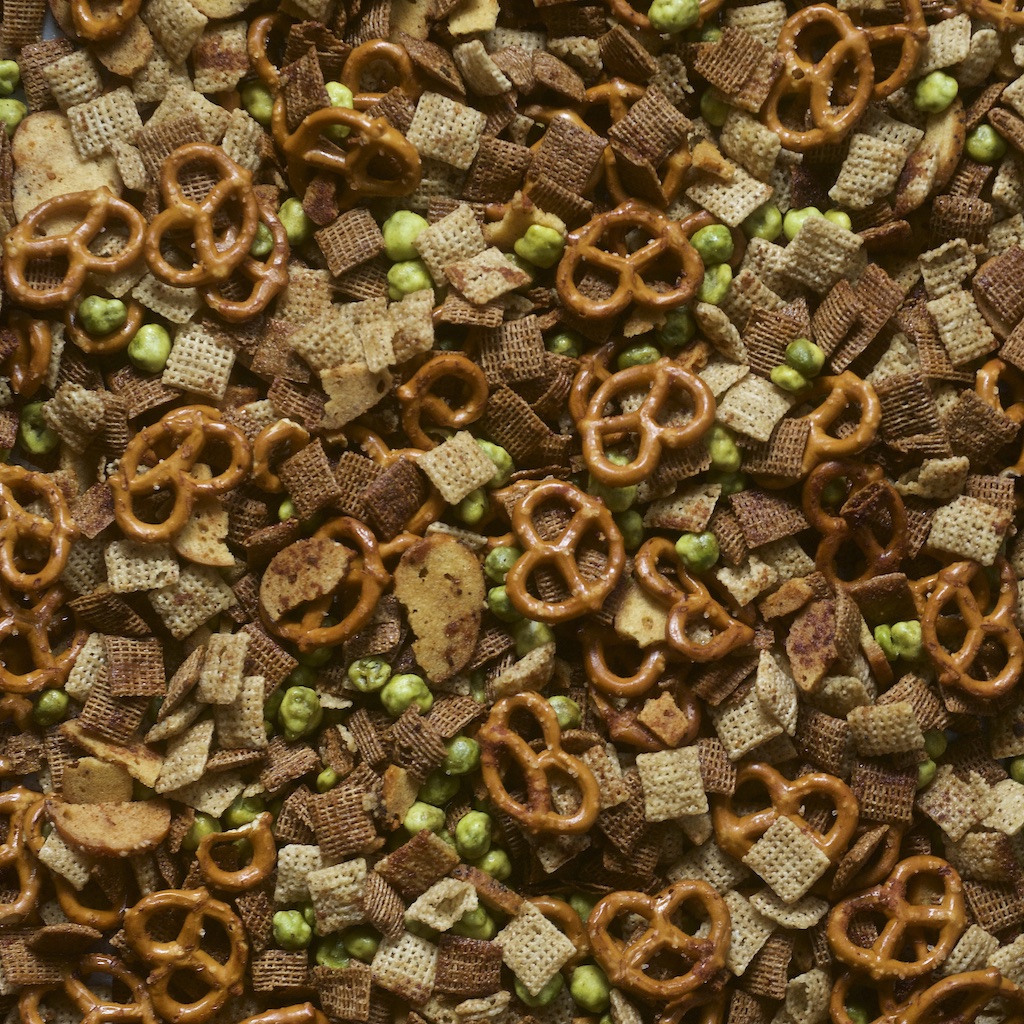
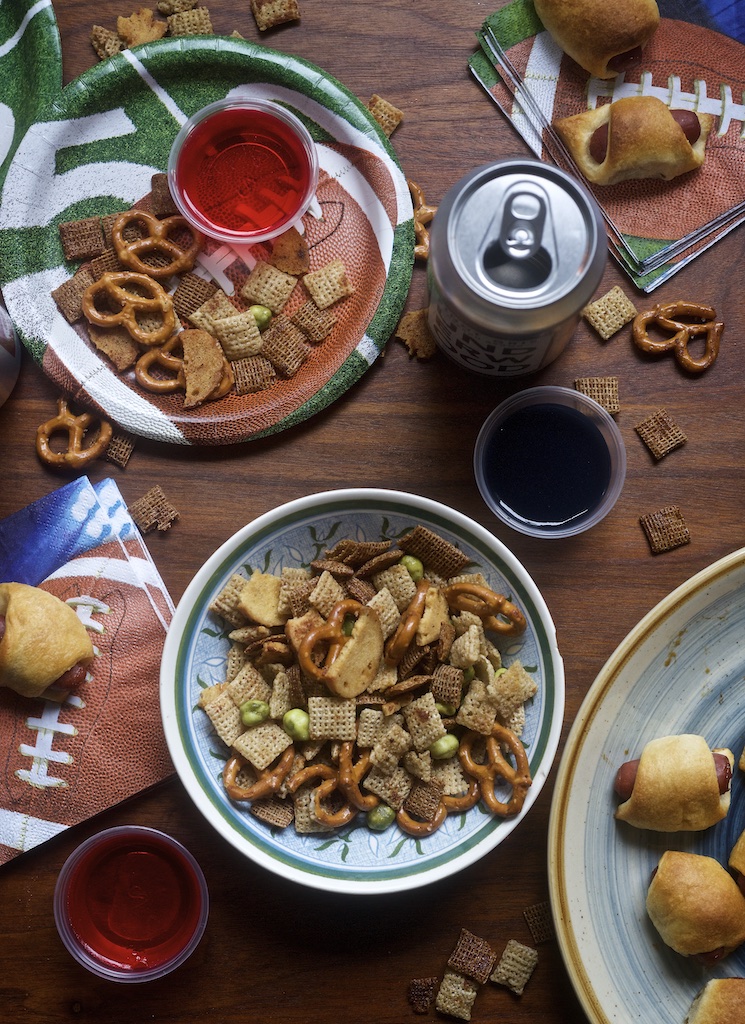
For our final recommendation, we wanted to stick with a tried and true classic—Pigs in a Blanket. We recently tried some pre-made, store-bought ones and they were terrible and crazy expensive. There is no substitute for making them from scratch, and it is so easy, there is no excuse not to.
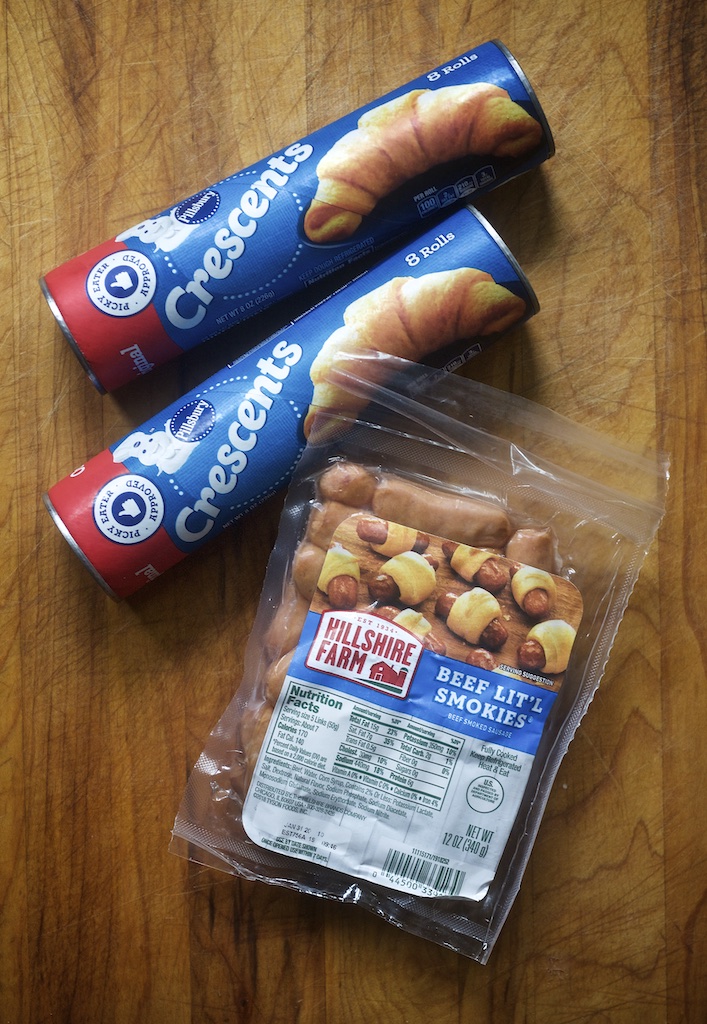
Literally the hardest part of this is how Pillsbury makes you open the rolls with the back of a spoon. It’s so weird, but it works, so I guess you can’t argue with success.
Take the Lit’l Smokies out of their packaging, rinse them well, dry them off and set them aside. Then open the crescent rolls. There will be 4 separate squares and each square is divided into 2 triangles. Cut each triangle into 3 smaller triangles. Place a Lit’l Smokey on each triangle, and roll it up. Place these evenly spaced on an ungreased cookie sheet and keep refrigerated until ready to cook.
Preheat the oven to 375 degrees and cook for about 12 minutes, rotating the pan halfway thru to ensure even cooking. Remove any that are getting too brown. Then just squeeze out some ketchup and mustard for dipping and you will be good to go!
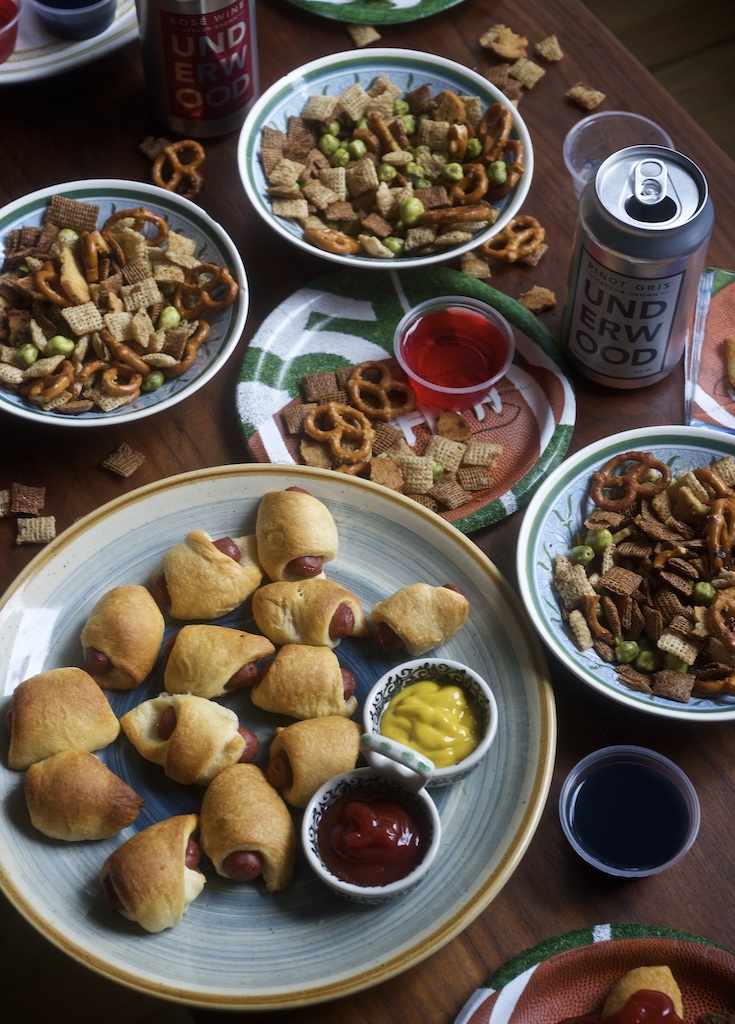
Whoever you end up rooting for, everyone here at Union wishes you a safe and exciting Super Bowl Sunday!
Bon Appétit! And make sure you have plenty of Underwood Cans on hand for all your guests.
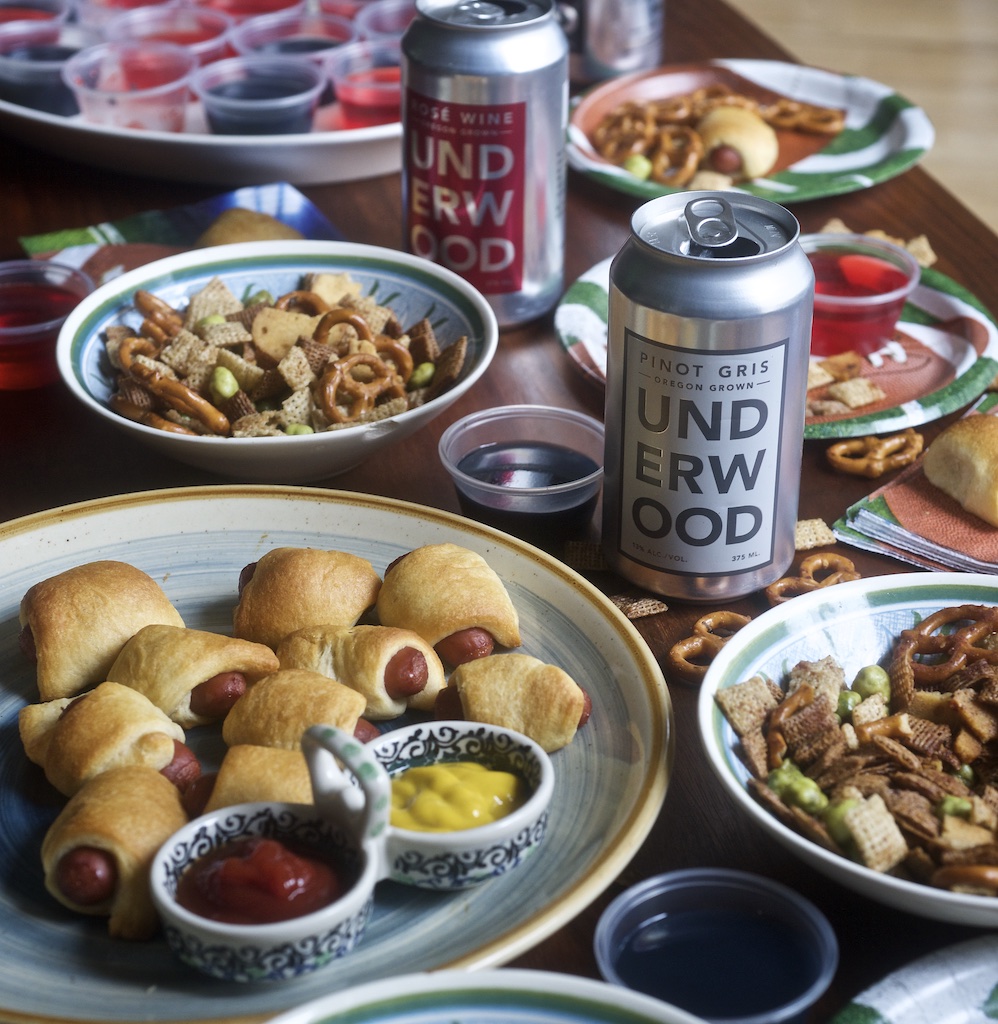
Photography, Text, and Recipes by David L. Reamer. (@dlreamer)
